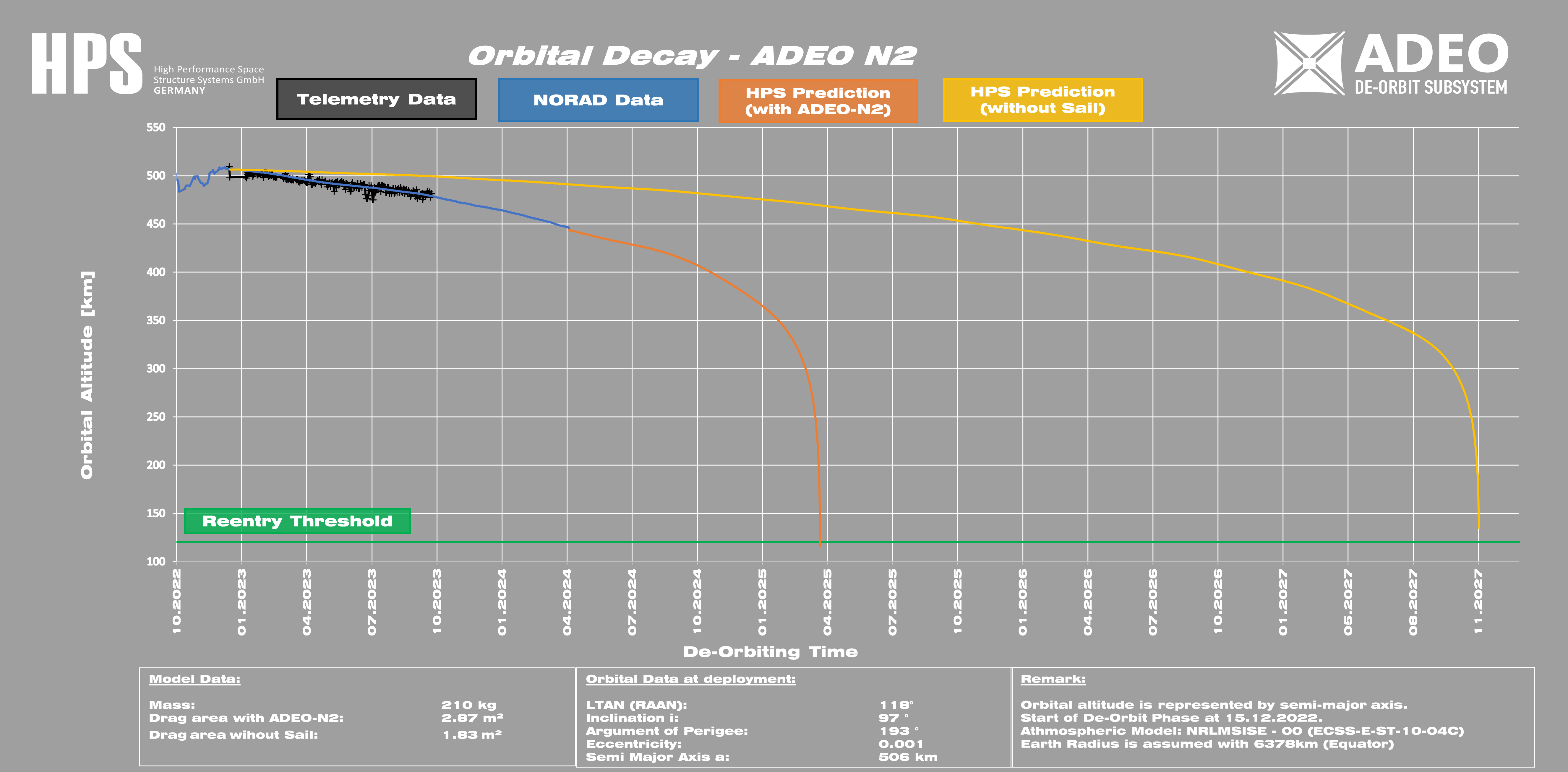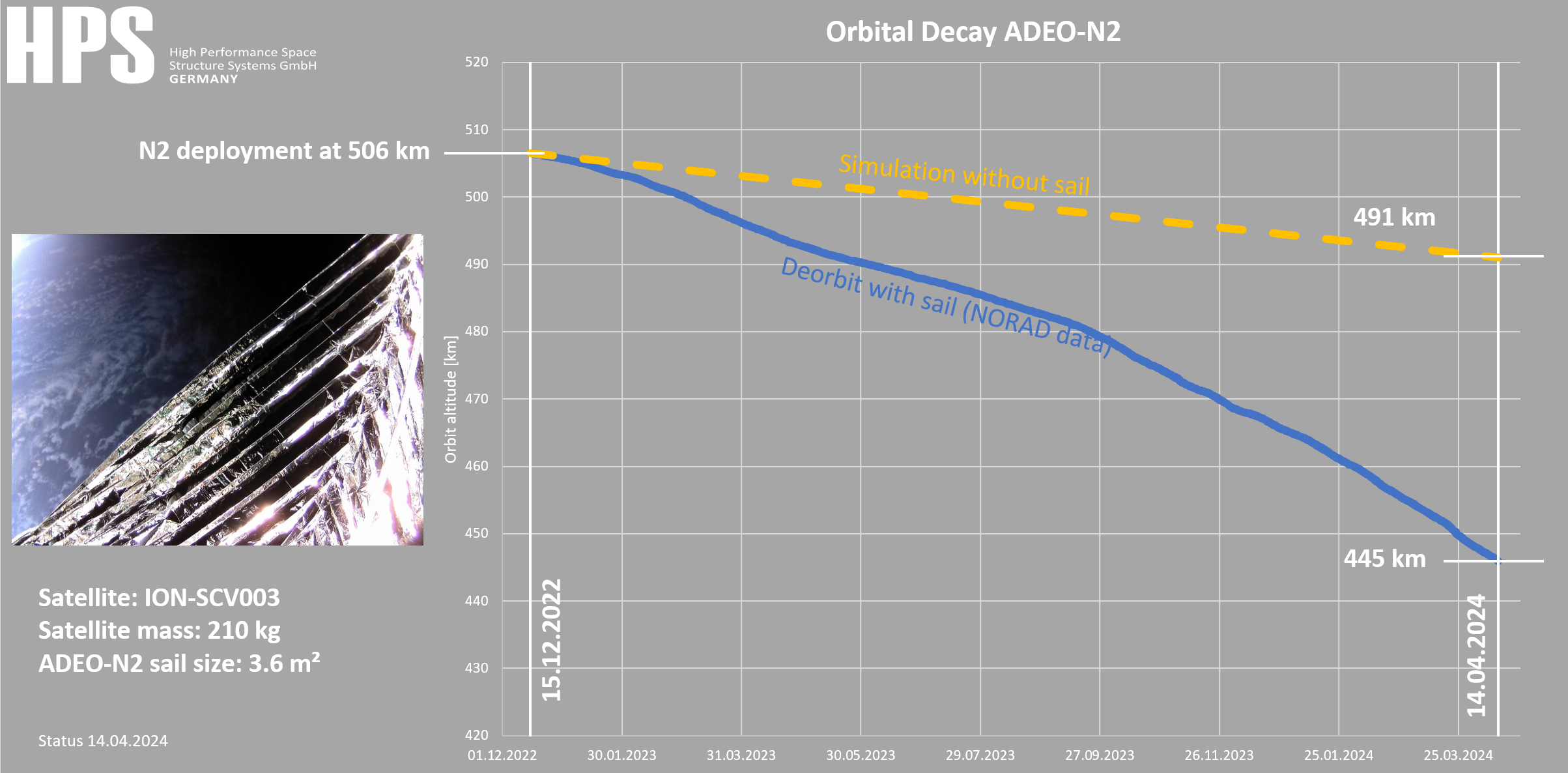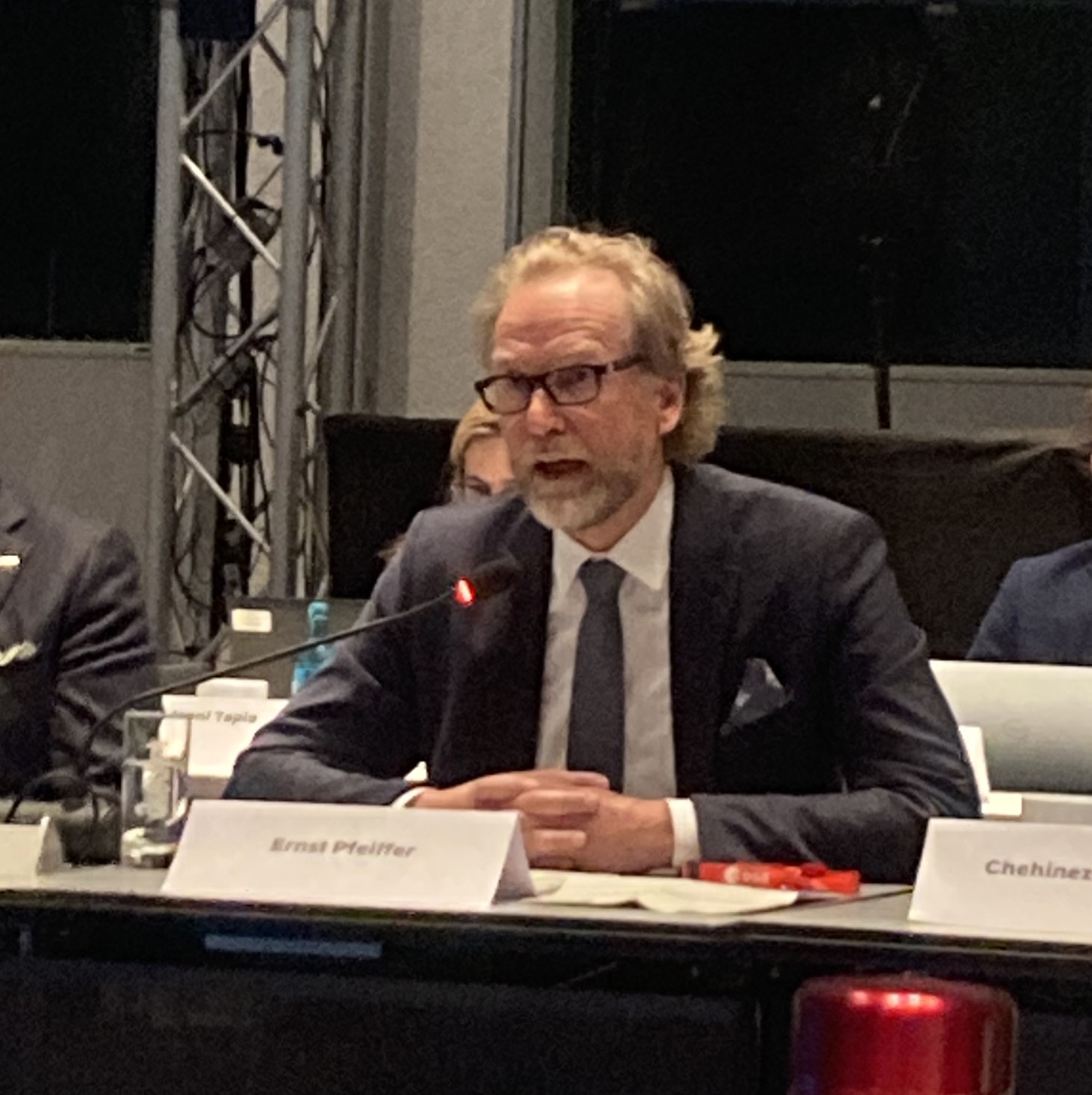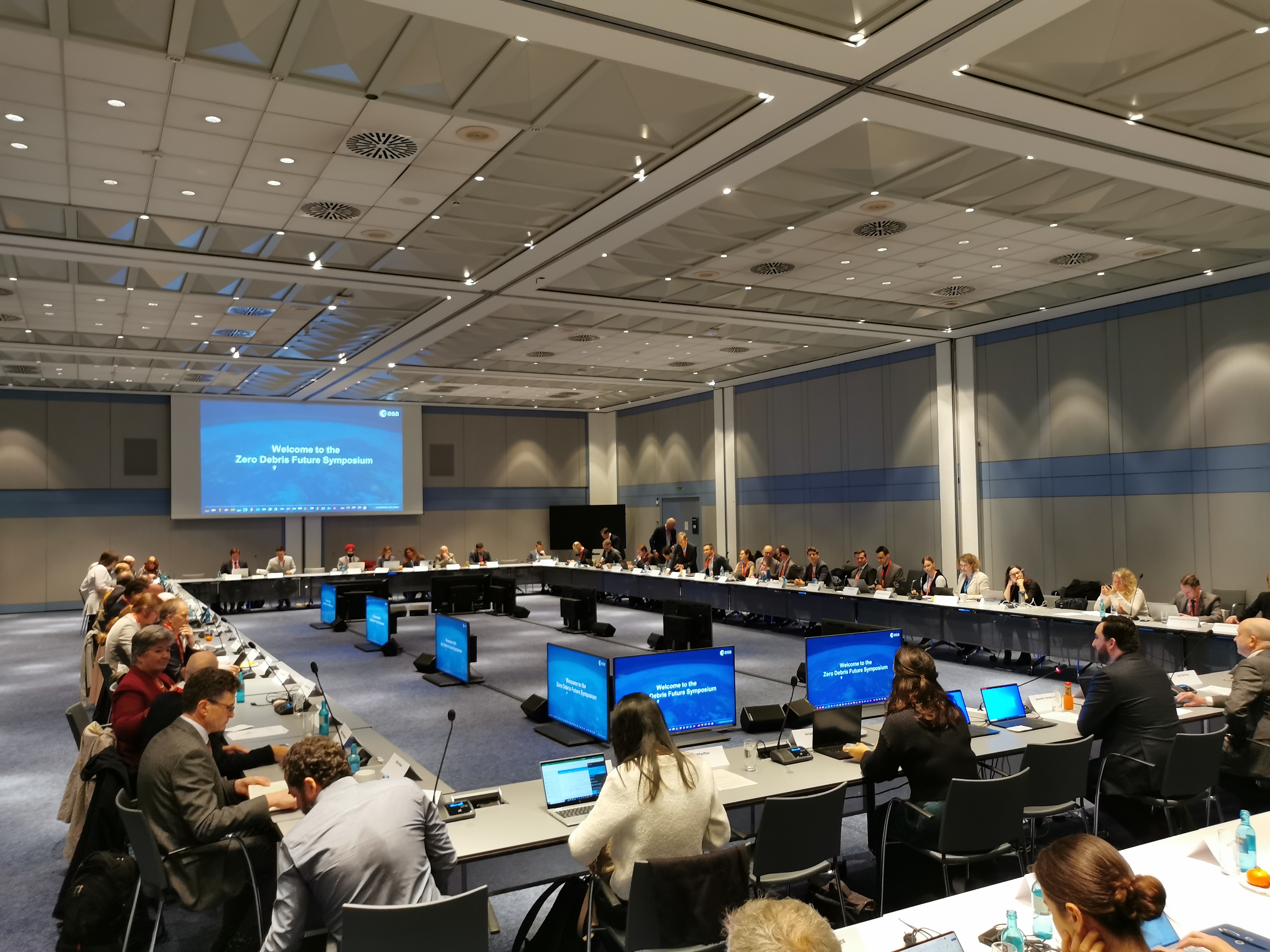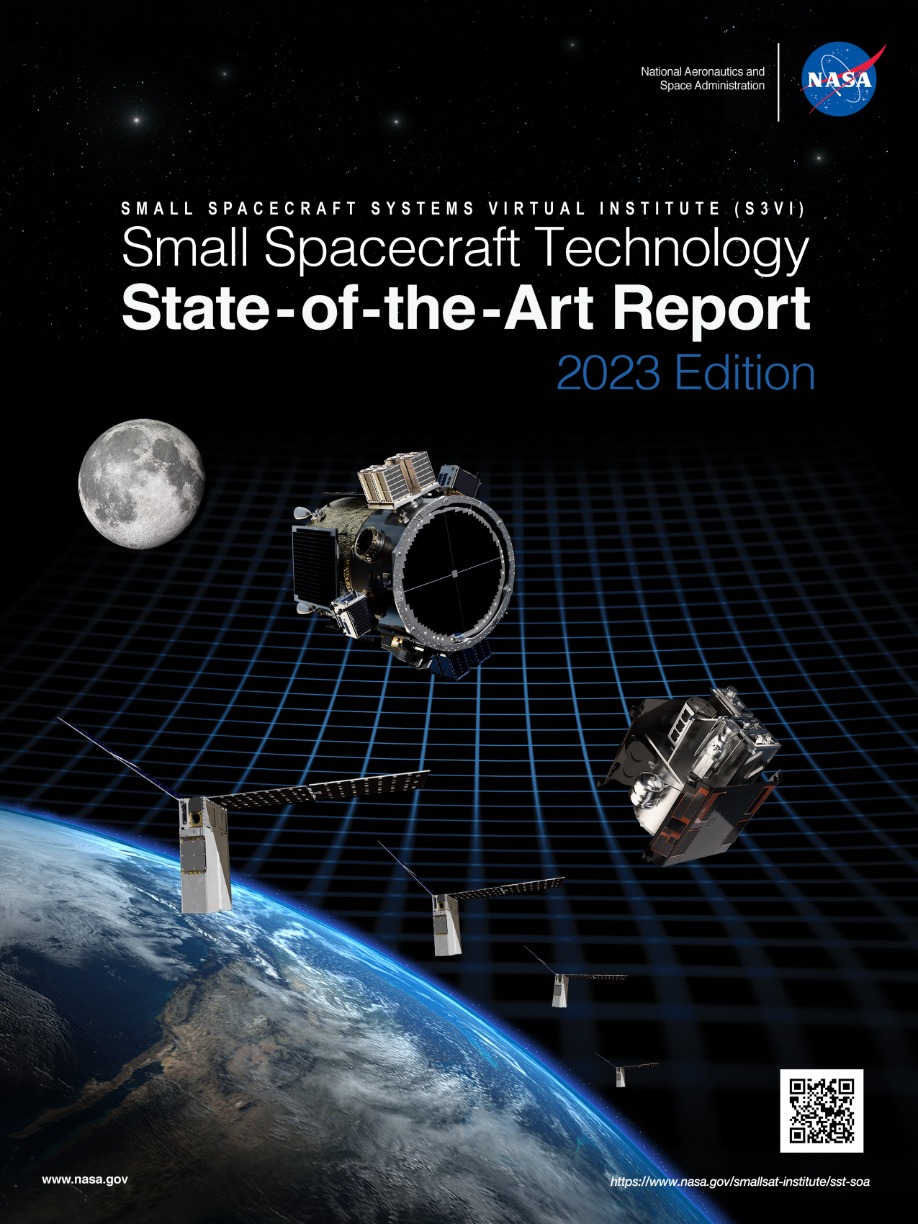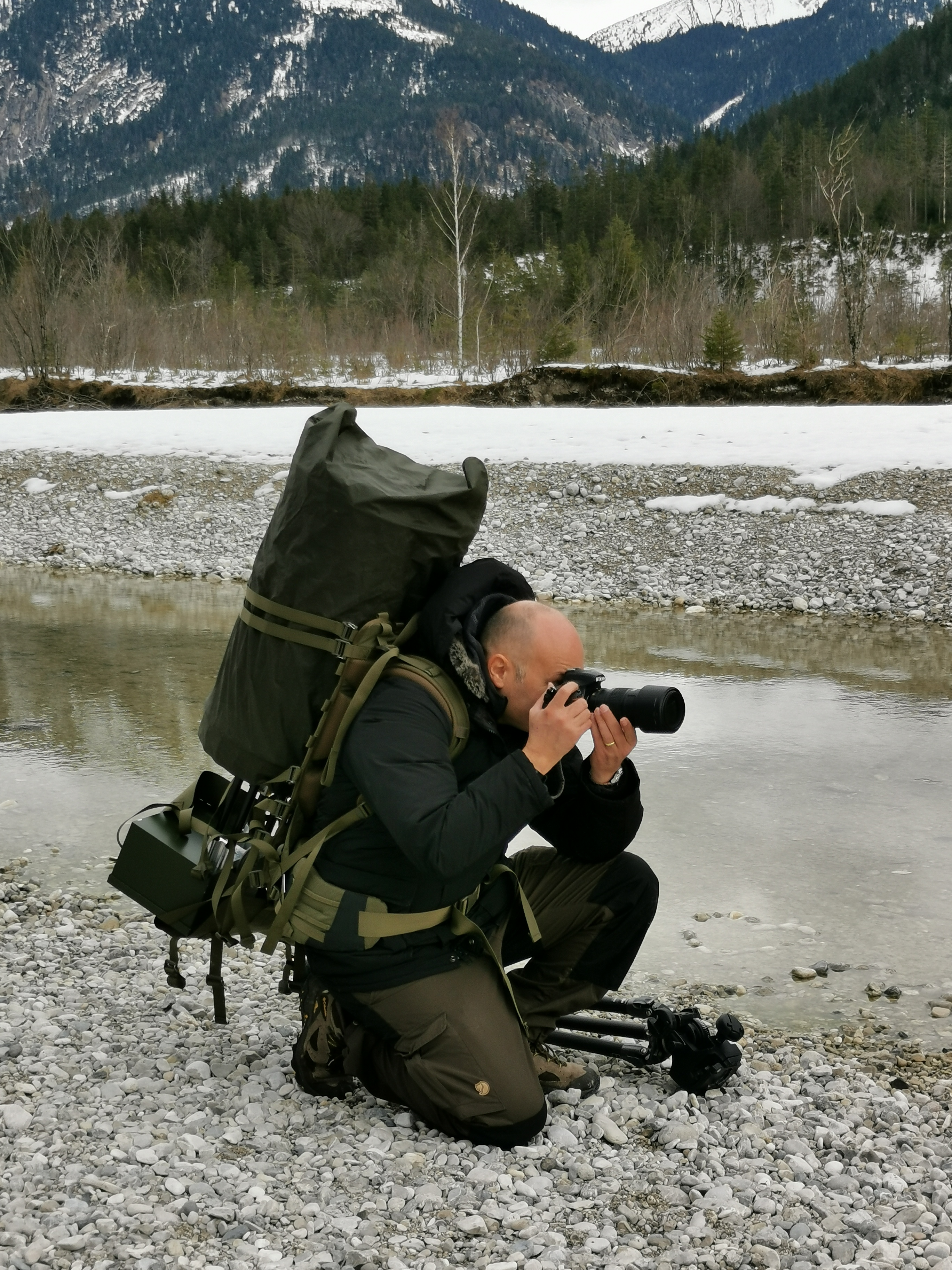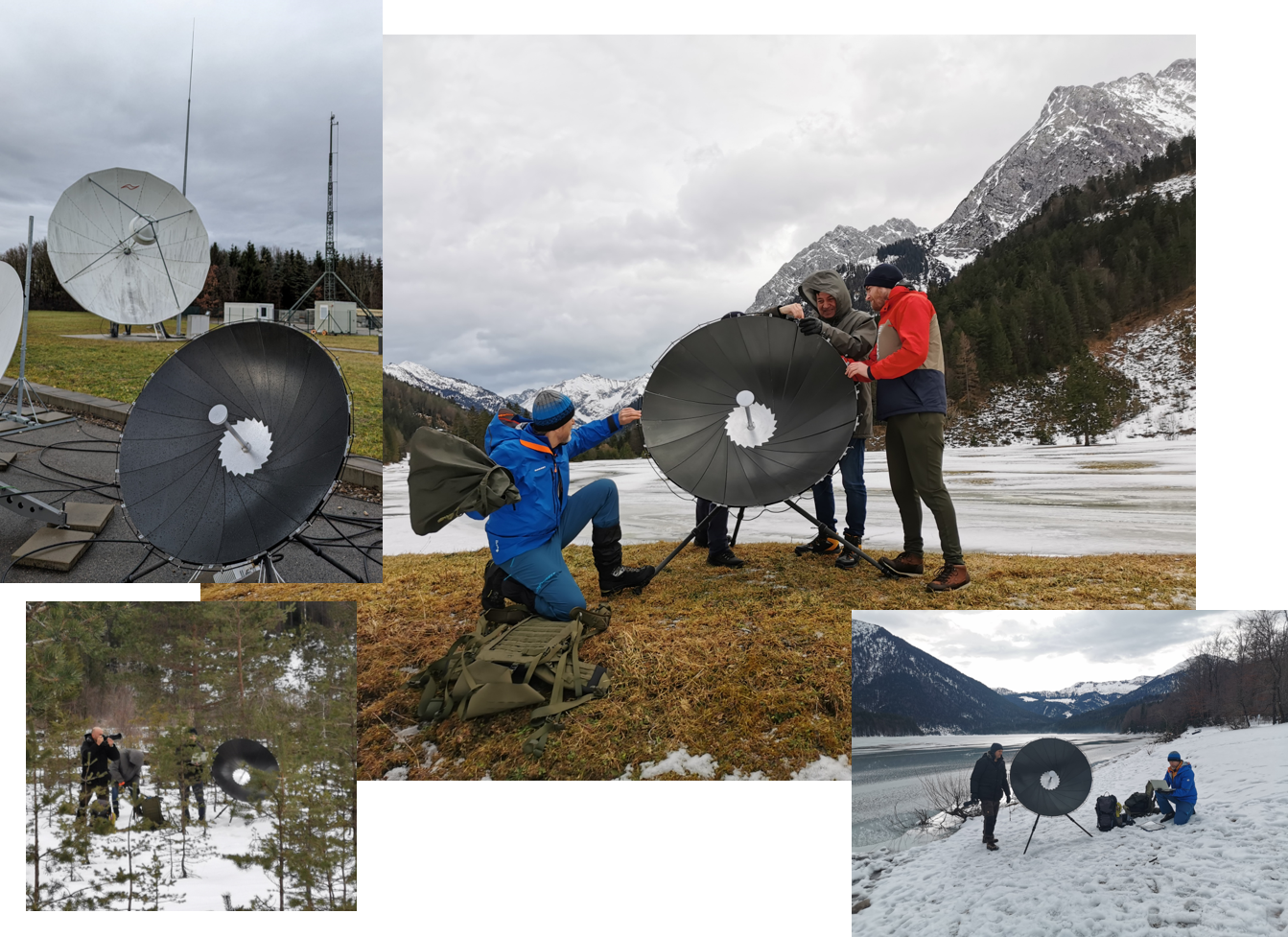Antenna specialist HPS conquers new territory in RF applications with verification of innovative 3D production
HPS Space News
Even formerly very sceptical augurs of space travel now agree that the ability to largely automate the series production of lightweight components while minimizing raw materials and ensuring maximum reliability will have a significant impact on the future development of applicable technologies.
However, the central prerequisite for the implementation of such visions is still a very classic step-by-step verification, in this case of two materials selected by the HPS engineers using the new ESA standard ECSS-Q-ST-70-80C.
Given the future potential of such technology, the European and German space agencies have a primary interest in the success of the research at HPS and provided GSTP funding for the 3DPAN2 project: “3D-Printed Antenna 2” is a follow-up project to 3DPAN, which was completed five years ago and initially demonstrated the feasibility in principle of 3D-printed RF components.
The product objective was an extremely lightweight X-band antenna with a diameter of ~30cm for the data downlink of earth observation satellites. It was finally manufactured from the aluminum alloy SCALMALLOY at the sub-contractor APWORKS GmbH in Ottobrunn. In addition, a filigree feed support bracket made of titanium was manufactured for fold-out antennas by the long-standing HPS trusted partner, the Fraunhofer Institute for Material and Beam Technology IWS, Dresden, as a subcontractor.
Meanwhile, the respective designs and FE analyses, as well as their iterative optimization, were carried out by HPS in Munich itself.
The final tests delivered positive results that exceeded all expectations. This applied in particular to the RF performance of the X-band antenna in the Compensated Compact Range (Munich University of Applied Science MUAS). Resistance to vibration (sine + random) was also successfully demonstrated for both demonstrators at SGS GmbH, Geretsried: here too, everything went without complications, i.e. above all without damage or deformation. Even a final TVAC test (10 cycles between +120°C and – 120°C) showed no cracks or deformations on the demonstrators.
Olaf Stolz, the responsible project manager at HPS, summed up the project as follows: “The objectives of the verification processes were achieved without any restrictions: the additively manufactured demonstrators were 20% and 25% lighter than corresponding conventionally manufactured components – a well-known enormous advantage in space travel. There were no restrictions on qualification for space applications. We would like to thank our cooperation partners, especially Dr. Samira Gruber (Fraunhofer IWS) and Mr. Nicklas Schwab (APWORKS) for the extremely good and successful cooperation in the project, as well as ESA, in particular Ms. Isabel Olaya Leon, Technical Officer of the 3DPAN2 project.
HPS CEO Ernst K. Pfeiffer is delighted: “It is fantastic that we are already implementing 3D printed components with the technology results of the ESA GSTP program in current flight projects. A goal that we set 8 years ago and that is essential for the future market has now been achieved.”


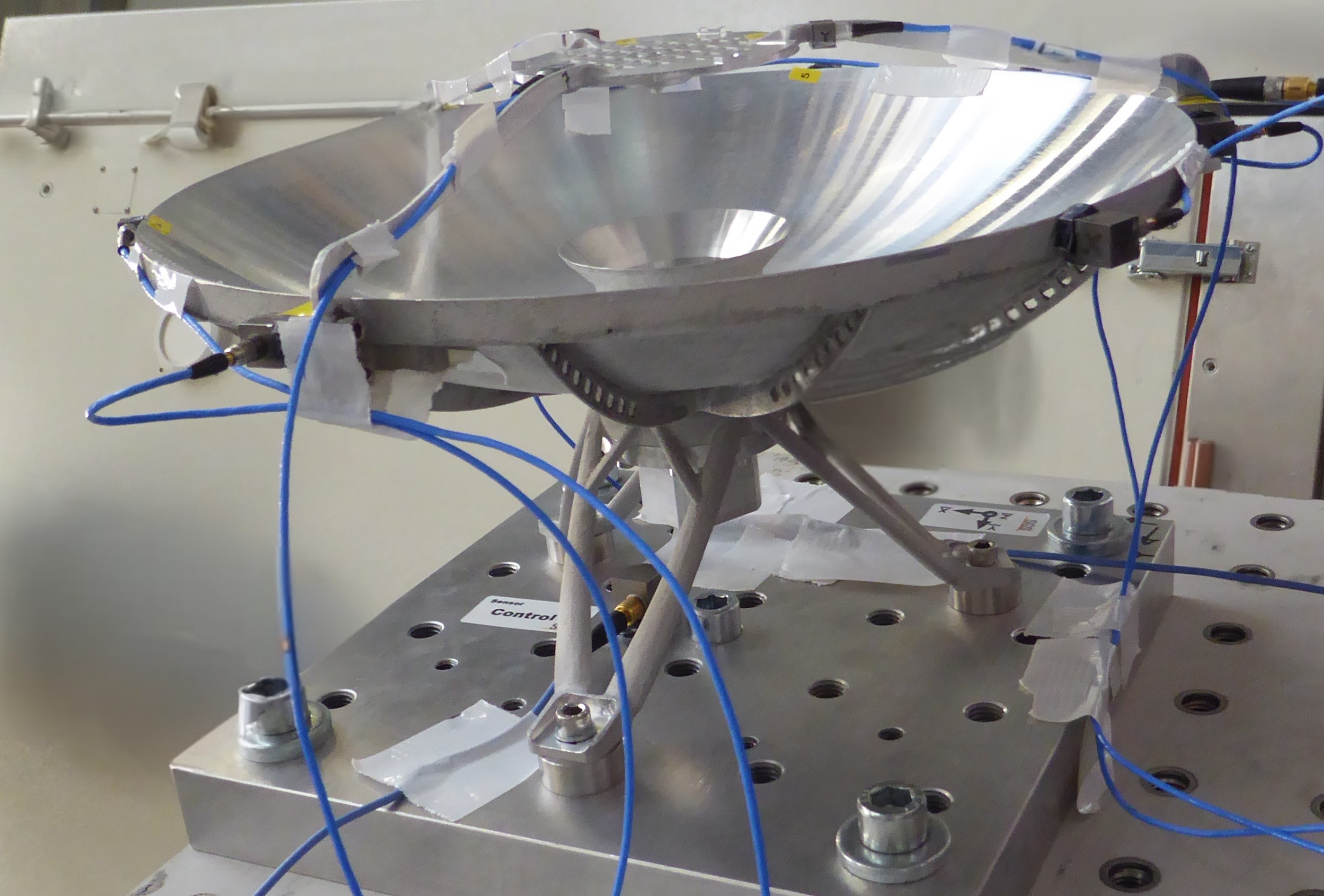
Dezember 2024
UDAN – The new generation of communication antennas for small satellites
Disruptive development by HPS for the new space sector
HPS, the Munich-based specialist for innovative antenna technology, has entered the realization phase of a fully functional engineering model (EM) with its in-house development “UDAN”. With the HPS design of a deployable conical quadruple helix, UDAN meets the requirements for the smallest possible space requirement during satellite launch as well as an antenna performance that was previously not possible on small satellites.
See deployment video from UDAN breadboard.
The pack size is only 10x10x15 cm (1.5 U), yet UDAN achieves 10 dBi minimum on usable bandwidth between 400 Mhz and 460 Mhz. When deployed, UDAN measures 50 centimeters in height with a diameter of 90 centimeters. Further scaling across the frequency ranges from 100 to 1000 Mhz is planned in order to diversify the service requirements of the communication satellites.
The development is being funded by ESA as part of the ARTES programme, while the German Space Agency at DLR is providing additional funds to maximize development efficiency.
This brings the completion of the CDR phase for February 2025, the production of the engineering model in Q2-3, followed by the test campaign and the closure of contract by Q4 in 2025. With the final completion of the project, UDAN will reach maturity level TRL 6, the in-orbit demonstration (IOD) which is planned to follow in Q2 2026 will then finally raise the HPS innovation to TRL 9 and thus reach out for the commercial market.
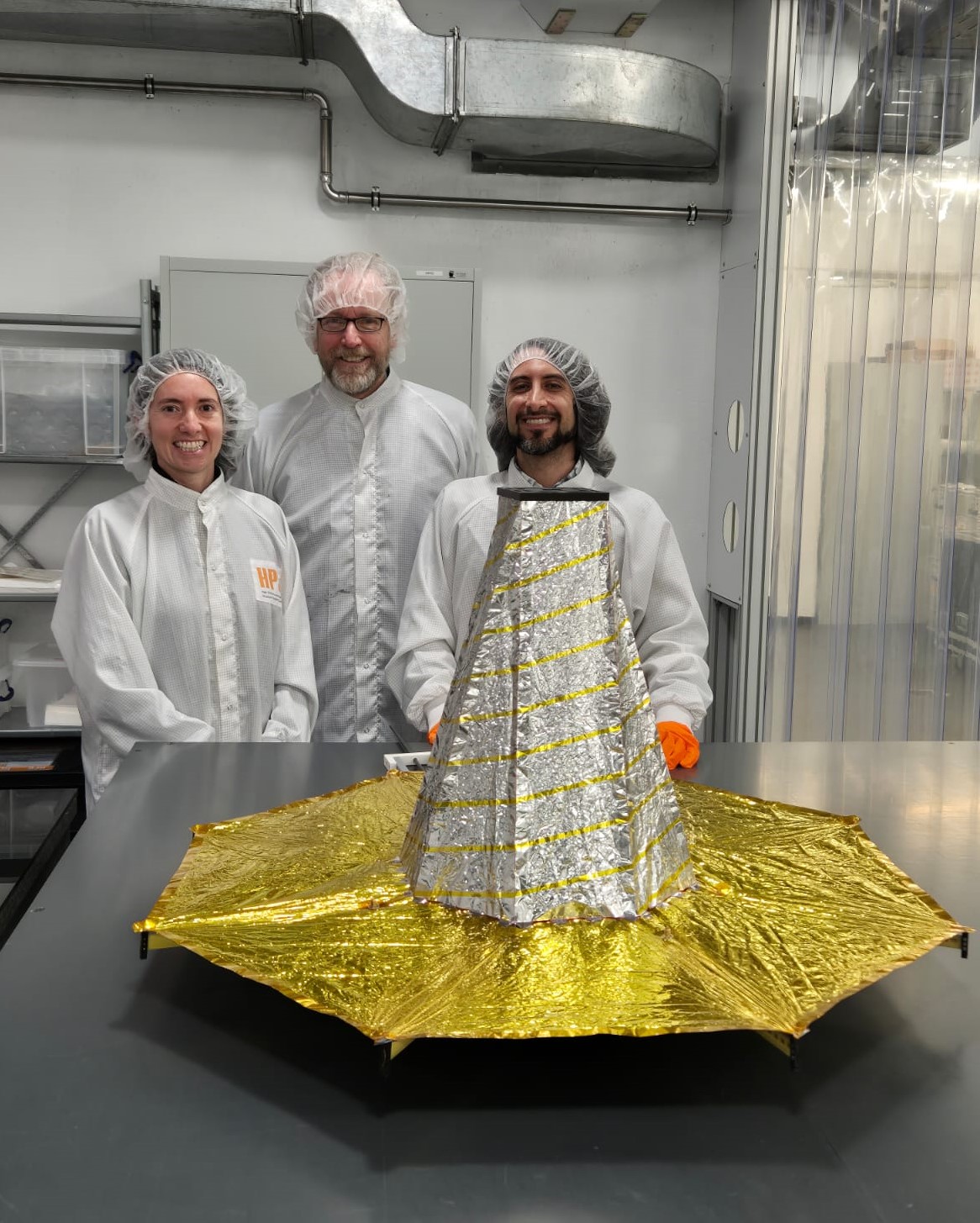
WILD RIDE mission ends with fireworks of success for deorbit sail ADEO-N2
Three days ago, on December 8, 2024, HPS received confirmation that ADEO-N2 completed its mission with launch in 2021 and end-of-business with deployment of the dragsail at 506 km orbit altitude in December 2022 in a record time of only two years with a firework of success, beating international rules and regulations by three full years. This is further proof of the success of the German ADEO model, which is manufactured in series production by the German world market leader HPS for all sizes of LEO satellites in five ADEO versions. ADEO fulfils the “5-year rule” already issued by several states and organizations for obtaining launch and operating permits for satellites, and with “Wild Ride” this has now even been verified in orbit by precisely tracking the deorbit curve until the satellite burns up completely at an orbital altitude of approx. 127 km (see image).
About the mission:
On June 30, 2021, D-Orbit, a leading company in the space logistics and orbital transportation industry from Italy, announced the successful launch of another ION Satellite Carrier (ION SCV 003), its proprietary orbital transport vehicle. It lifted off at 9:31 p.m. CEST on June 30, 2021 atop a SpaceX Falcon 9 rocket from Space Launch Complex 40 (SLC-40) at Cape Canaveral Space Force Station (CCSFS), Florida. That same day, 60 minutes after launch, the vehicle was successfully placed into a 500 km high Sun Synchronous Orbit (SSO).
ION Satellite Carrier is a space transporter developed, manufactured and operated by D-Orbit. ION is capable of accommodating multiple satellites, transporting them into space, performing orbital maneuvers and precisely releasing them into dedicated orbital positions.
At the end of the so-called WILD RIDE mission, the ION SCV 003, weighing 210 kg at the time, entered the deorbit phase on December 15,2022 with the deployment of ADEO-N2 (effective sail size 3.6 m2, christened “Show me your Wings”) entered the deorbit phase and began testing the world’s first precise functional in-situ verification of a dragsail, with official “end of flight” on 08.12.2024 [source: NORAD], i.e. within exactly 2 years in a completely natural way and without exhaust gases from any propulsion system. Without sails, SCV-003’s deorbit would have taken twice to three times as long.
About ADEO:
ADEO-N is a 1U-sized deorbit sail module developed by the German space company HPS, in cooperation with several companies and institutions (e.g. DLR and Fraunhofer), co-funded by the ESA-GSTP program, the German national technology program, and the Bavarian technology program. In accordance with the new rules, ADEO ensures the removal of end-of-life satellites from LEO within a maximum of 5 years.

Dezember 2024
HPS Christmas Party 2024: Our Biggest Yet!
Last night, we celebrated the holidays together at our annual Christmas party – and this year was extra special!
For the first time, we hosted it on our new floor, making it the biggest Christmas party in HPS history!
The evening was filled with:
- Plenty of mulled wine and delicious food
- A variety of drinks to toast the season
- 12 inspiring mini-presentations (just 2-5 minutes each) by our Department Heads, CEO, CFO, CTO, Quality Management, HR, Procurement and Social Media, sharing insights and ideas.
It was a wonderful evening of connection, celebration, and looking ahead to an exciting future. Here’s to the amazing HPS team and the bright year ahead!
Producing antennas in series
For over 20 years, the Munich-based space technology company HPS has been known for breaking new ground wherever possible and establishing an increasingly solid bridge between ClassicSpace and CommercialSpace with innovations of all kinds. This applies to products such as deployable antennas of all sizes through to processes such as the series production of the deorbit sail module product family (ADEO).
With the implementation of a further process innovation, HPS is now also realizing new efficiency horizons in the antenna sector, because a commercial customer is in a hurry: more than 20 broadband antennas are needed, in a period of less than only 12 months, starting NOW. HPS is already known from a large number of successfully completed antenna orders – whether from the institutional or commercial sector – for the routine of quality production at a consistently high level that is valued by customers. But now, with the start of small series production, the company is heralding the introduction of a further development stage in the process of merging the quality features of conventional and new space technology into something new and even better. And despite all the high pressure, with the power that comes from calm.

November 2024
HPS and EXOLAUNCH: Making Space Clean Again
HPS is happy to join forces with the Germany-based Exolaunch and is fully engaged to support customers of Exolaunch by enabling this very special and successful NewSpace-launch service provider to grant priority access to the delivery schedule of flight-proven ADEO* deorbit sails which are currently in high demand.
EXOLAUNCH’s COO Jeanne Allarie and HPS’s CEO Ernst Pfeiffer signed an Agreement on Space Tech Expo 2024 in Bremen in a great joint spirit (see pictures) the ambitious endeavour of
- being a role model for a sustainable use of space and
- of raising awareness with all potential customers on an existing solution for deorbiting: ADEO-modules are easy, affordable and reliable to contributing significantly to Making Space Clean Again.
See for the respective EXOLAUNCH announcement
(* ADEO-modules are needed to allow a satellite deorbit after its “End-of-Business” within five years; satellites without this or any kind of deorbit accelerator do not get clearance for launch anymore.)
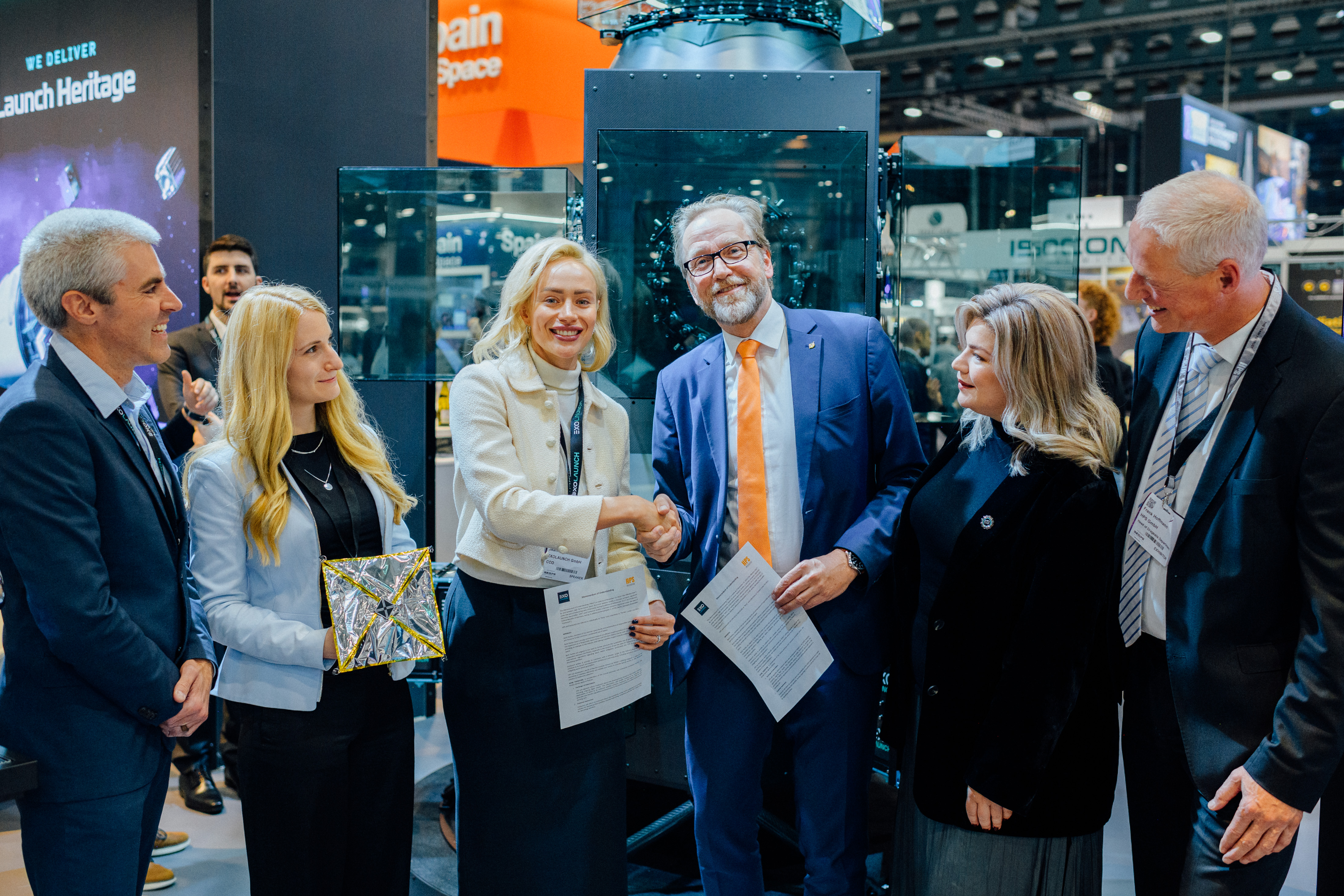

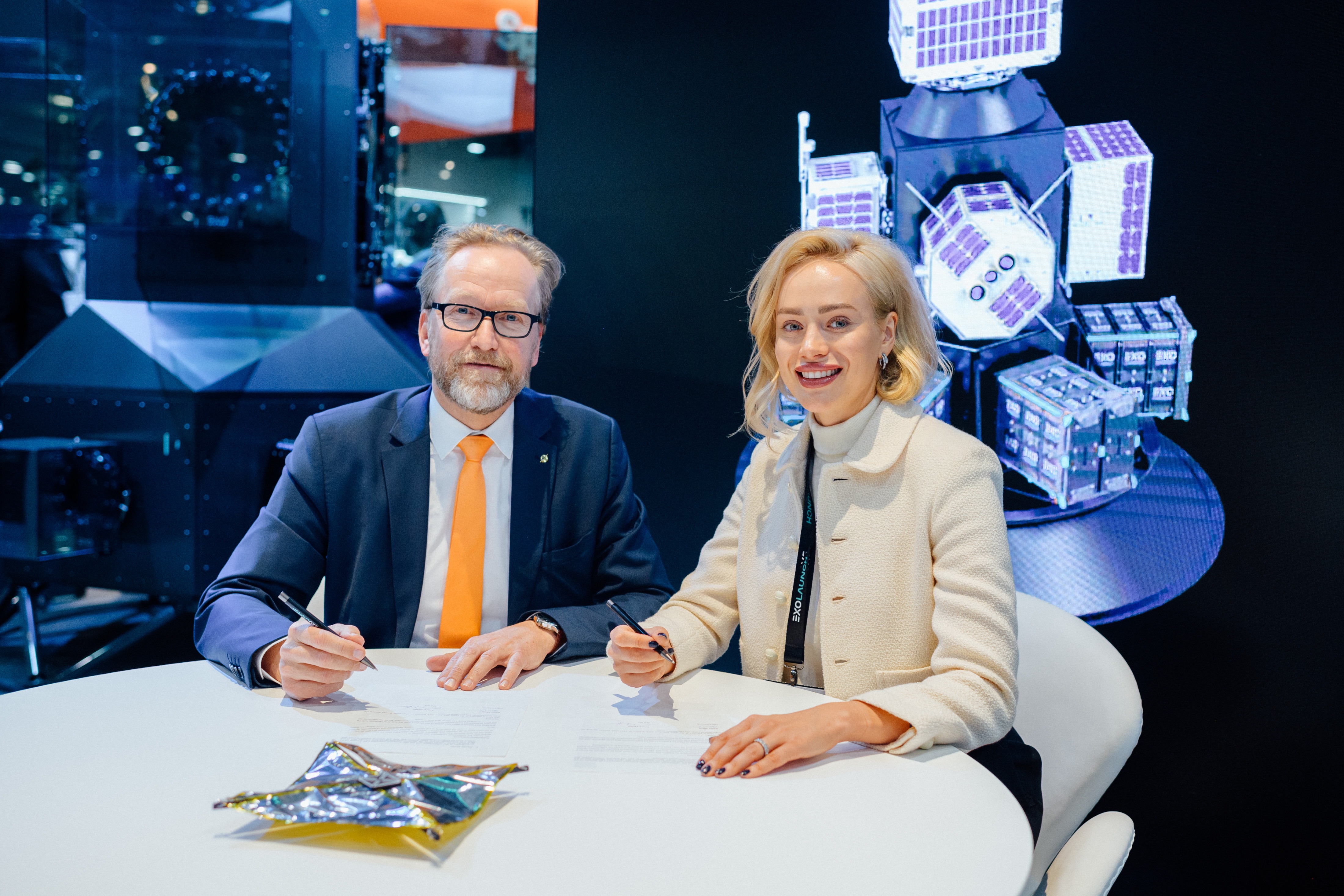
November 2024
German space agency chief Dr. Walther Pelzer and DLR delegation focus on visit to HPS Group
During the traditional DLR delegation round on the opening day of the Space Tech Expo in Bremen, the head of the German Space Agency at DLR, Dr. Walther Pelzer, focused his attention on SMEs in the German space industry. Special attention was paid to the innovation forge HPS. And it was represented in groups: with HPS Germany (Munich), HPS Romania (Bucharest) and the joint venture company HPtex (Münchberg, Germany).
With reference to pioneering antenna projects such as HERA and EUCLID, company boss Ernst K. Pfeiffer emphasized the leading position Germany has gained in special antennas for space missions. HPS is also positioning itself as a leader in the commercial sector with the successful ADEO braking sail project, which ensures compliance with the new 5-year rule for satellite deorbiting and thus keeps the satellites ready for launch.
In his role as spokesman for German space SMEs, Ernst Pfeiffer also took this opportunity to emphasize the enormous importance of the DLR and ESA’s capability-enhancing technology programmes for SMEs as the innovation backbone of the industry. According to Pfeiffer, the precise promotion of the technological capabilities of SMEs via dedicated competition areas reserved for SMEs is irreplaceable.
Live demonstrations, e.g. of a functional model of the ADEO brake sail or a scaled model of a deployable large antenna reflector, supplemented by product demonstrations from HPS-Romania (e.g. radiator) and from HPtex’s MESH production (e.g. Ka-band mesh sample for use in the Copernicus mission CIMR) rounded off the visit program.


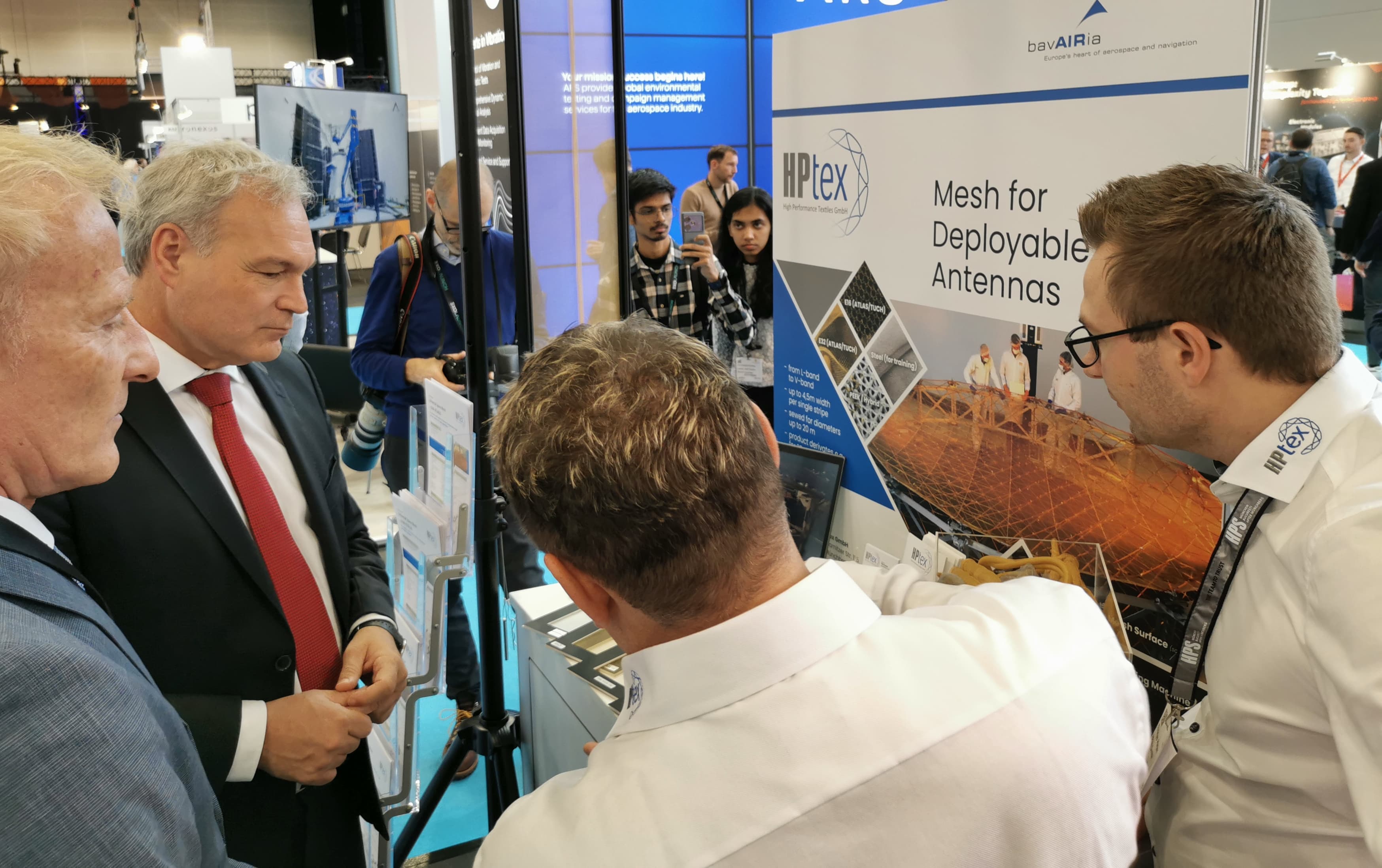
HPS at Space Tech Expo 2024
November 2024
HPS at SpaceTech Expo Bremen: Full product portfolio of the entire group of companies at the presentation area of the Bavarian space companies (booth no. J53)
In record time, SpaceTech Expo in Bremen has developed into the largest and most important space trade fair in Europe. This year’s event has over 700 exhibitors. With its rapid growth, SpaceTech Expo in Bremen is itself the best example of the rapidly increasing importance not only of space capabilities in general, but also of the young NewSpace companies that are making powerful inroads into the commercial and institutional markets for space products and services.
However, a very special role is played by those companies whose portfolio serves both the New and Classic Space sectors, thus building a bridge between the two in-house. One of the most prominent examples is the HPS Group.
This innovator in European space-tech, with its headquarters in Munich, subsidiary HPS Romania in Bucharest and joint venture partnership HPTex in Münchberg near Bayreuth, is bringing all the product evidence for this positioning to Bremen.
For example, institutional customers looking for European solutions for large deployable reflector subsystems will find them at HPS, which will ideally play a constitutive role in upcoming iconic ESA earth observation missions such as “Cryorad” and “Hydroterra”.
The heart of these subsystems is also produced in-house: HPTex GmbH weaves reflective mesh surfaces of all sizes for deployable antennas. In addition, HPTex – with its own stand in Bremen now for the first time – even produces stainless steel mesh for training purposes for customers from all over the world.
Two representatives from Bucharest will also be present in Bremen; the main focus here will be on secondary structures, thermal hardware (MLI, thermal straps, radiators), MGSE and purge equipment. All products are scalable for large missions as well as for small satellites and cubesat missions.
However, literally “floating” above the overall portfolio of the HPS presence in Bremen is the star product of HPS, which is currently causing a worldwide sensation like no other, especially interesting for customers from the NewSpace scene: ADEO, the brake sail for the automatic controlled deorbiting of disused satellites of almost any size at the end of their mission. The reason for the ADEO hype is as simple as it is obvious: without technical equipment to guarantee a deorbit limited to a maximum of 5 years, satellites will no longer receive approval for launch on LEO. One technical option is the “manually controlled” descent. However, in addition to considerable personnel resources, it also consumes up to 60 percent of the fuel that should actually keep the satellite in orbit for as long as possible so that it can earn its money in the first place. The other option is to install a deployable brake sail on the satellite at the end of the mission, which then automatically brings its host “home”. The industrial world market leader for this technology on all continents is HPS from Munich; a live demonstration of the deployment of a PICO-class ADEO will take place at SpaceTech Expo at a date yet to be determined. This could be a highlight for all interested new customers. The flood of inquiries about prices and interfaces speaks volumes.
HPS CEO Ernst K. Pfeiffer himself will be on site for the entire duration of the trade fair alongside the management level of the group from Romania and Germany; he has a firm opinion on the event both as the company boss and as a spokesperson for SMEs in the industry, represented by the AKRK and the “Best of Space” association: “Europe’s non-dependence and sovereignty through its space industry is more important than ever before, especially after the presidential election in the USA. What we will see here in Bremen is the antithesis to the far too widespread phlegm of a bureaucratized industry and to the “we can’t do anything anyway” attitude that has been creeping in for some years now: fresh ideas, brashly and cheekily driven forward – that’s what space travel needs, including the “Made in Germany” seal. NewSpace and Classic Space are mutually dependent and stimulate each other, because even the most disruptive developments need to be anchored in the familiar and proven. This is also what we at the HPS Group stand for.”
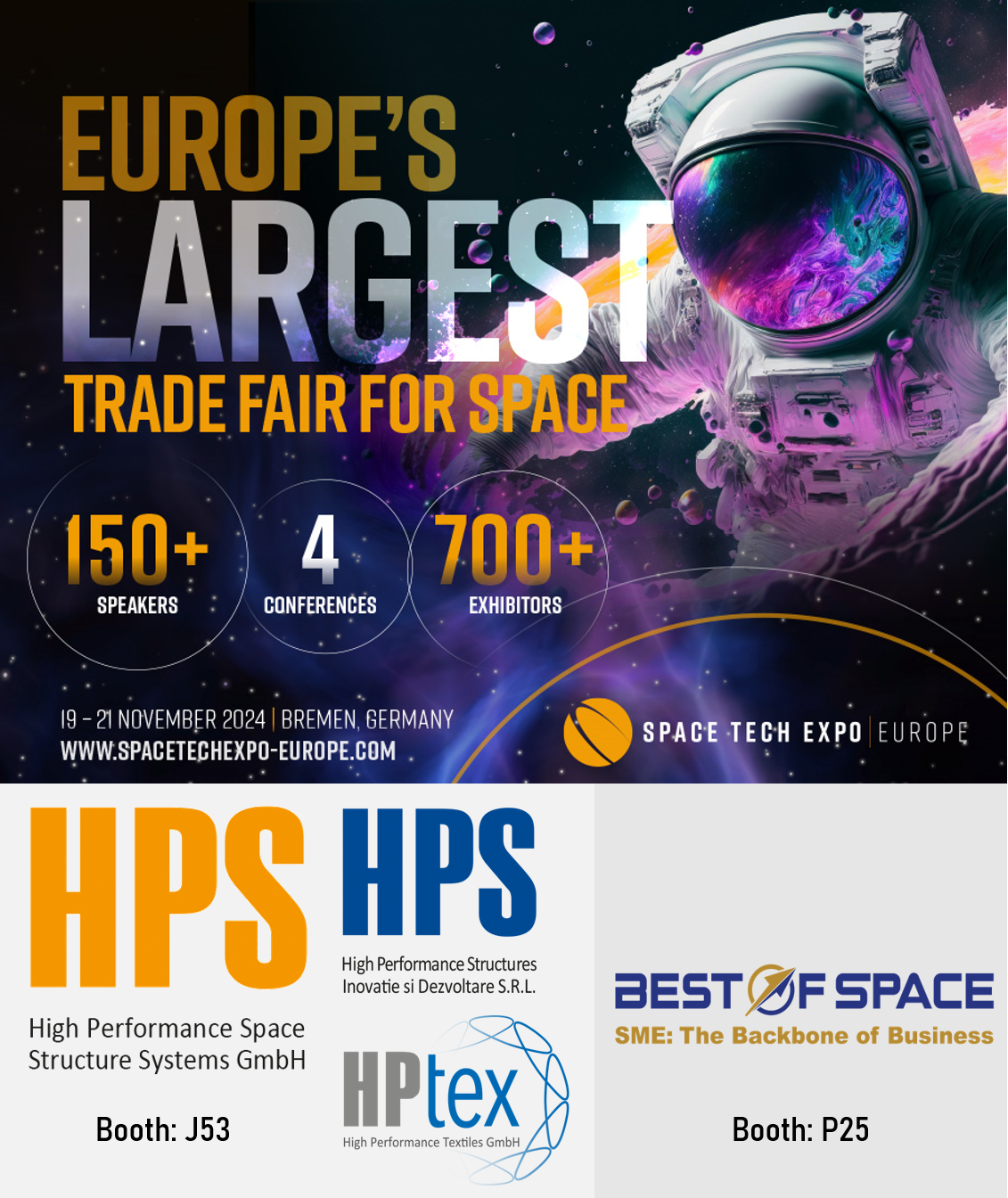
November 2024
New laboratory for mesh research at HPS
The Munich-based space technology company HPS is a joint venture partner of Iprotex-GmbH; both are equally involved in the joint company HPTEX in Münchberg near Bayreuth. This is where the flexible reflector material “MESH” is tailor-made and of the highest consistent quality for applications such as small and large deployable space antennas.
The market for mesh is divided among a small number of players worldwide. To survive here, continuous development is an essential prerequisite. HPS has therefore recently set up its own mesh research laboratory at its Munich headquarters on Hofmannstrasse. The initial team of two specialists is currently being expanded to include a further engineering position. The initial equipment of the laboratory for the further development and optimization of HPTEX mesh has already cost HPS 50,000 euros; among other things, investments were made in a mesh tension jig (stretch test rig) including an HD camera system. In addition, for yet another 50k euros the whole basement-area of the HPS building has been improved to host capacities for assembly work on ADEO brakesails in serial production.
Customized service is a top priority at HPS, so the new laboratory also carries out contract research, e.g. in a project called VMESH, in which a mesh for the very high frequencies in the V-band is being developed. The laboratory’s ability to carry out multiple iterated processes to measure the stretchability of antenna meshes is also unique on the market.
In addition, HPS is Europe’s only supplier of large deployable antenna subsystems with its own mesh production. The company’s flagship project is the ESA Copernicus Mission CIMR. HPTEX also serves customers from all over the world, including Europe, the USA, the United Arab Emirates, South Korea, Singapore and Taiwan, with the support of the new laboratory at HPS. The mesh is manufactured at HPTEX itself.

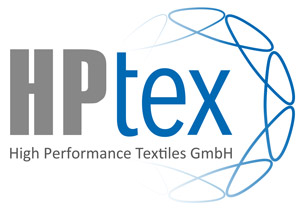
October 2024
Clean Space Days der ESA im Oktober: ADEO aus dem Hause HPS im Fokus
In 2024, the ESA’s Clean Space Team once again invited participants to the continuation of the past Clean Space Days.
The four-day event will focus on progress in the areas of eco-design, zero debris and in-orbit maintenance.
The calendar of presentations in 2024 will highlight these topics, among others:
- Life cycle assessment for space activities
- Deorbit technologies
- Debris disposal
- Disturbance-free skies for astronomy
- IOS missions
- Circular economy for space travel
While some presentations tended to highlight ideas and technical concepts in statu nascendi, HPS manager Frank Hoffmann presented the ADEO product family, which is already successful on the European and, more recently, North American markets: Deorbit sail technology for automatic self-disposal of the satellite at the end of the mission.
The ADEO system offers a suitably customized solution for every class of spacecraft, whether as a “Pico” (1-20 kg), “Cube” (5-50 kg), “Nano” (20-250 kg), “Medium” (100-700 kg) or even “Large” (500-1500 kg). To ensure that satellite manufacturers are supplied without delay, all orders are handled by HPS directly from series production wherever possible.
Due to the fact that the requirement to carry a suitable disposal system such as ADEO is a prerequisite for launch authorization for practically all satellites from October 2024, longer delivery times are possible and can be largely avoided by ordering early.
The Clean Space Days will come to an end at the end of the week, but the saying “after the event is before the event” also applies to this successful European space event.

October 2024
HERA on its way: Europe writing the next chapter of space history with HPS antenna
On Monday, October 7, 2024, the mission that will put Europe ahead of science fiction was launched in Cape Canaveral, Florida, on board a SpaceX Falcon 9 with the HERA satellite. After around three years of flight into deep space, the satellite will begin in 2027 to precisely document the consequences of the impact of the American DART mission to deflect the trajectory of the asteroid Dimorphos.
A central element of the HERA satellite is the X-band system from the German antenna specialist HPS (Munich): a complete antenna with a diameter of 1.2 meters made of highly stable carbon fibres, high eigenfrequenz with good reflectivity and also extremely low weight. For HPS, with its experience from major antenna projects such as the Euclid (ESA, direct client TAS-SP) and Heinrich-Hertz (DLR, direct client TESAT/OHB) missions, the antenna is proven technological terrain. Nevertheless, as the only link for scientific data between the satellite and the earth, the HPS antenna plays an enormously important role for the entire mission.
With a total mass of just 7.5 kg, it is basically a scaled-up version of the model that HPS built for ESA’s Euclid observatory, which already operates 1.5 million km from Earth. However, Hera’s antenna will have to cover much greater distances than Euclid, as it will transmit and receive over a maximum of 400 million km. To accomplish this, HPS’s high gain antenna amplifies its signal by more than 4000 times to reach Earth, focused to just half a degree, so that the entire spacecraft moves to align with its home planet.
For the flight and mission, the high-gain antenna is mounted on the outside of the spacecraft. There, it is thermally insulated from the extreme temperatures in space with a Kapton germanium sunshield, while the radio waves continue to pass through. “As engineers, we are known for staying focused on the facts and cool as Mr. Spock when dealing with the challenges facing our technology; but when the time actually comes for Europe to write space history with our antenna, then we too can be very proud and emotional,” said Ernst K. Pfeiffer, CEO of HPS.
Also, HPS-CTO Paolo Zolla was moved when he witnessed the launch live at Vandenburg Spaceport, California: “The launch was thrilling since our arrival in Florida, when the police officer at the airport told us a big hurricane will come soon. On launch day, it was raining really hard and the wind was blowing super strong. We thought the launch might get canceled. But then, just a few minutes before it was time to go, the rain stopped and the wind calmed down. The launch director said, ‘We’re good to go!’
The Falcon 9’s liftoff was a dramatic sight. Its nine engines ignited, slowly lifting the rocket before it rapidly accelerated, leaving a trail of flame and smoke. The ground rumbled as the rocket soared into the sky. Watching it disappear over the clouds, with the HERA spacecraft and ‘our’ antenna aboard, left a lasting impression—a mix of pride and the feeling of being part of an extraordinary mission.”
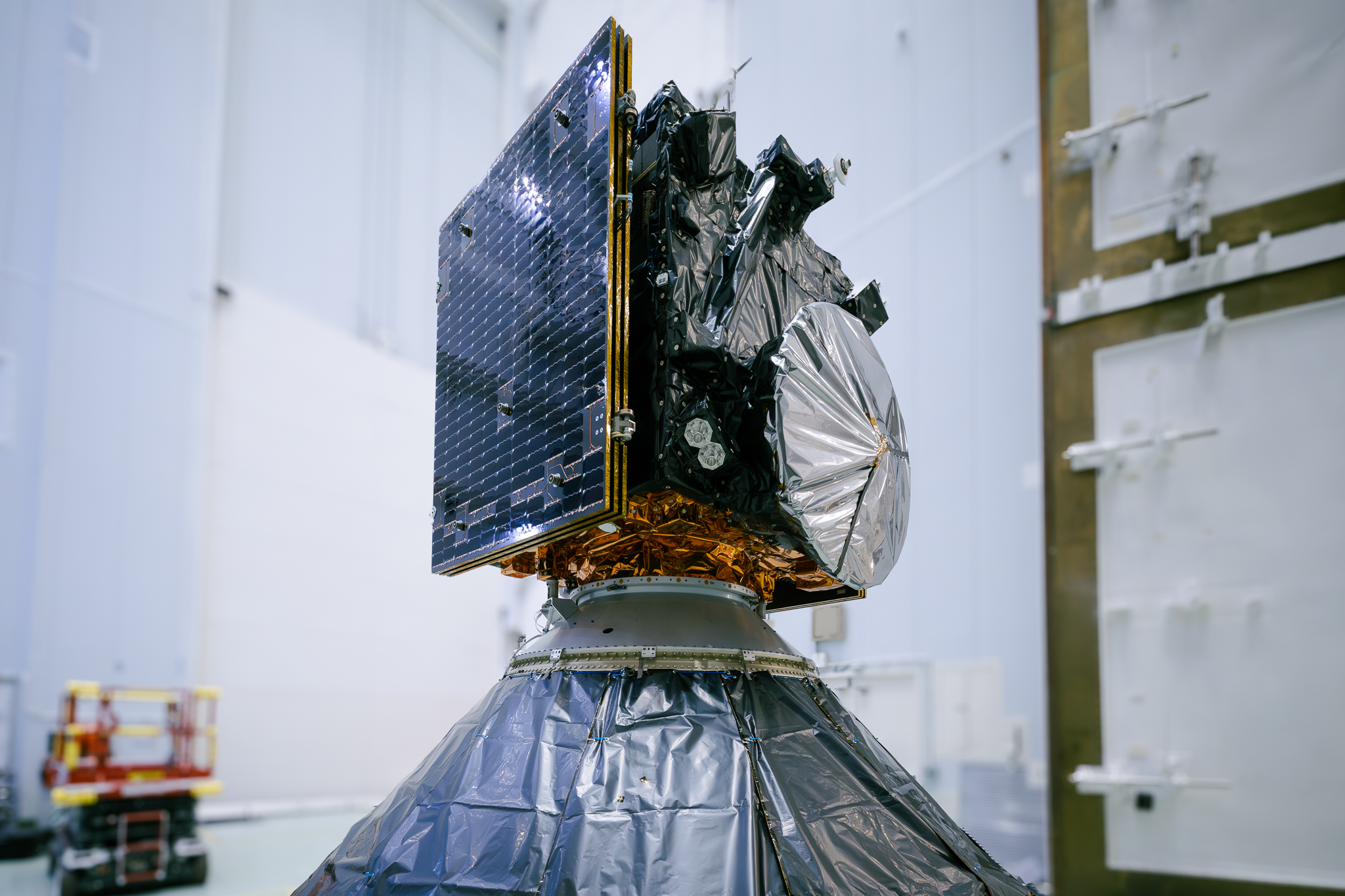

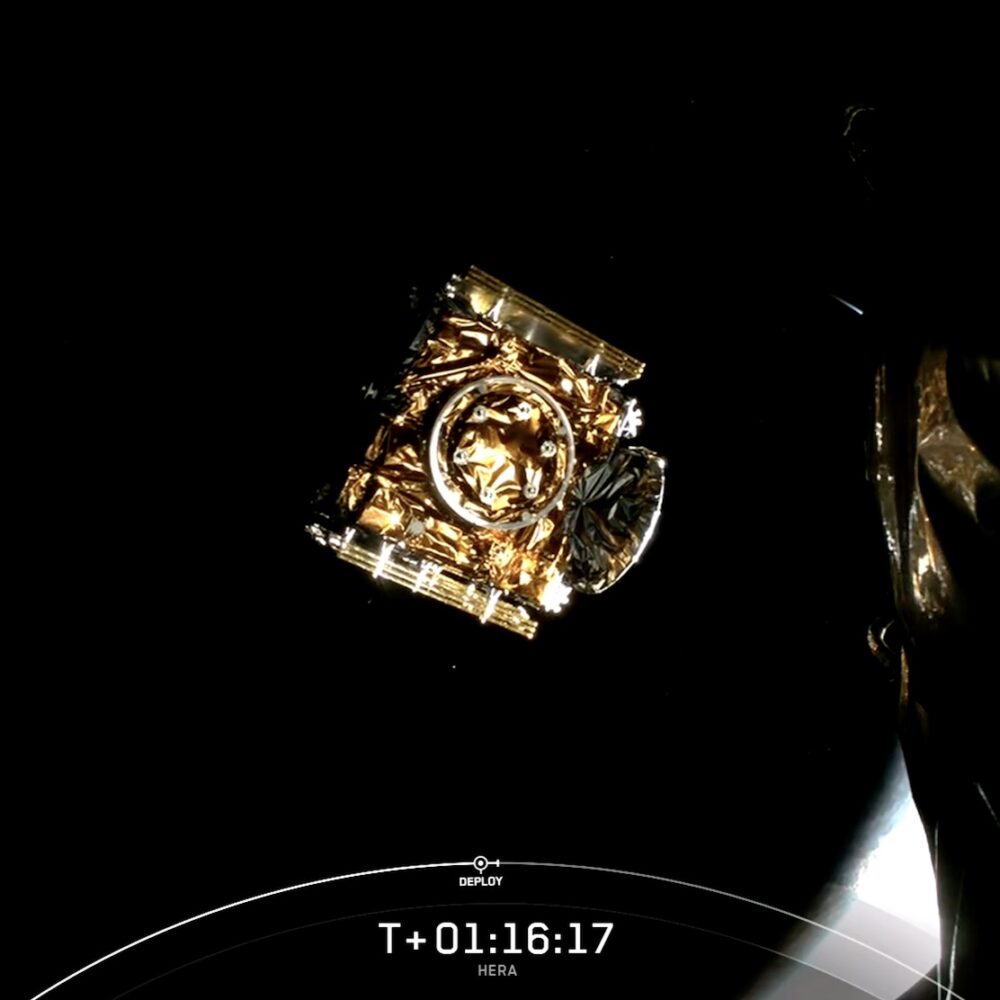
Oktober 2024
HPS Prominently Present at the IAC in Milano
Participating in the International Astronautical Congress, IAC, has developed into a good tradition at HPS over many years. This year, the company will be represented by Ernst K. Pfeiffer, CEO, together with ADEO project manager Mrs. Dorittya Milankowitch from HPS Munich and Horatiu Gheorghe as IAC-contact point for HPS Bucharest with products like secondary structures, thermal hardware and purging equipment. The HPS-team will keep up full presence during all five days of this international event.
Special highlights will be the company presentations; they are going to take place on Friday, 18th, from 10.15 to 10.45 a.m., and also as part of the Company Slam at the booth of the German association BDLI on Tuesday from 13.15 to 13.45 p.m..
Focus of both presentations will be on the product family of the ADEO deorbit sailsystem for automatic disposal of satellites after their end of mission, serving the idea of clean space, sustainability and debris avoidance even from the beginning of the satellite´s journey.
Main products besides ADEO to be asked at our booth: reflector antennas, deployable antennas, large deployable reflector subsystems, mesh, thermal hardware, purging equipment. HPS will warmly welcome there all its customers from both worlds: classic and NewSpace. For a dedicated prearranged business meeting please send a message to Contact@hps-gmbh.com.


Oktober 2024
Innovative BANT-1 reflector antenna from HPS for Reflex: exemplary symbiosis of NewSpace and established space-SME
NewSpace – this means, among other things, speed in development, production and provision, paired with innovative versatility as a leitmotif for the performance of the product. A current example of this is the broadband reflector antenna developed for the new Reflex Aerospace satellite by space SME HPS GmbH (Munich, Germany) with a broadband spiral as an axial feed. The primary development goal was to achieve a large bandwidth and considerable gain while at the same time limiting the time from order to delivery to the customer to just 12 months. The antenna consists of a prime focus reflector with a diameter of 700 mm and an f/D ratio of 0.32, which is fed by a compact ultra-wideband cavity-backed spiral (CBS).
HPS thus succeeded in meeting all customer expectations in terms of performance, price, and timing while adhering to best practices and strict quality management; the project can serve as a striking example of an exemplary symbiosis between NewSpace and established space SMEs towards “NextSpace”.
The Reflex satellite will be launched on board a Falcon9 as part of a SpaceX rideshare 12 mission.
Picture:
Satellite “SIGI” by REFLEX AEROSPACE with integrated reflector Antenna “BANT”, supplied by HPS Munich, ready for transport to the launchpad in the U.S. (left: Ernst K. Pfeiffer, CEO HPS, right:Walter Ballheimer, CEO REFLEX AEROSPACE, visit as of September 30th, 2024)

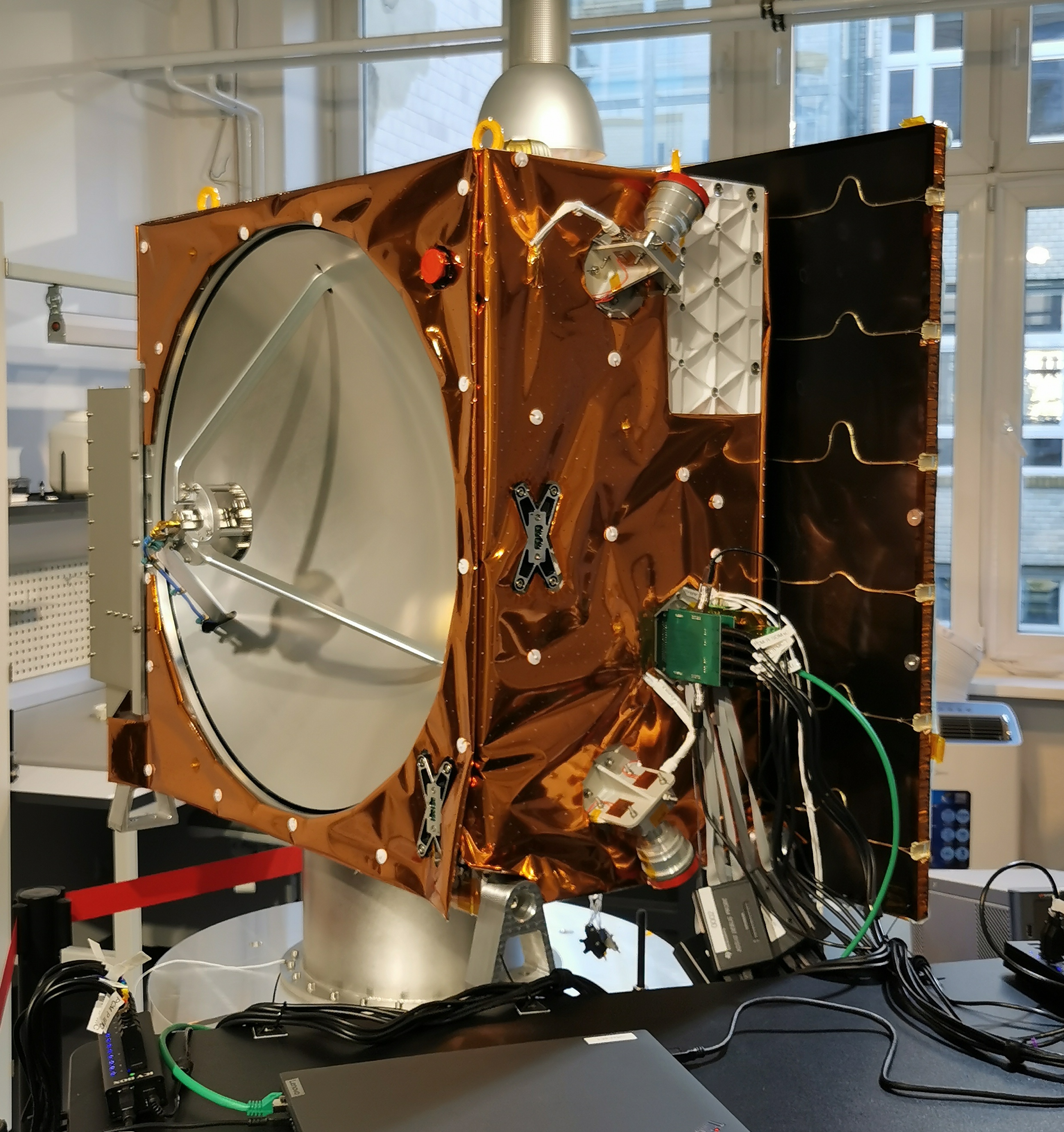
September 2024
ADEO Pico: The smallest dragsail gains a foothold in the largest market
Deorbit Technology from HPS
With the ink now drying under the contract for a PICO-class satellite deorbit device from the ADEO dragsail family of HPS, the Munich-based space technology company is now also setting foot on North American soil: After careful consideration of the alternatives, the Canadian company StarSpec Technologies decided in favor of the system for integration on their InspireSAT 12U ADCS MVP satellite, to be launched in 2026.
The ADEO-P was purchased at the beginning of July. The integration will be carried out by the experts in 2025. The satellite is planned to be launched in 2026 aboard a Falcon9 as part of the Transporter-17 SmallSat Rideshire mission from the Vandenburg Space Force Base in the USA. At the end of the mission, the dragsail will be deployed to a size of 1.4 m2 and automatically dispose of the satellite within the now obligatory period of less than five years. The satellite will burn up in the atmosphere without leaving any residue.
This initiative promotes StarSpec’s high precision space-qualified ADCS components, including sub-arcsecond precision star cameras, cogless reaction wheels, and ultra-high-bandwidth controllers, providing 100x the precision and imaging quality for LEO imaging satellite.
Jason Brown, Mechanical & Technology Lead, commented on the key factors leading to the selection of the ADEO-P for InspireSAT: “A primary mandate of InspireSAT is to provide high performance in-orbit capabilities in a way that does not compromise and strongly maintains the continued and future utility of LEO. We are delighted to have HPS, a proven high-tech specialist in the international space industry, at our side, allowing StarSpec Technologies to maintain its sustainable and orbit-conscious approach to space in a way that maintains focus on the successful demonstration of our transformative state-of-the-art ADCS. Thanks HPS!”
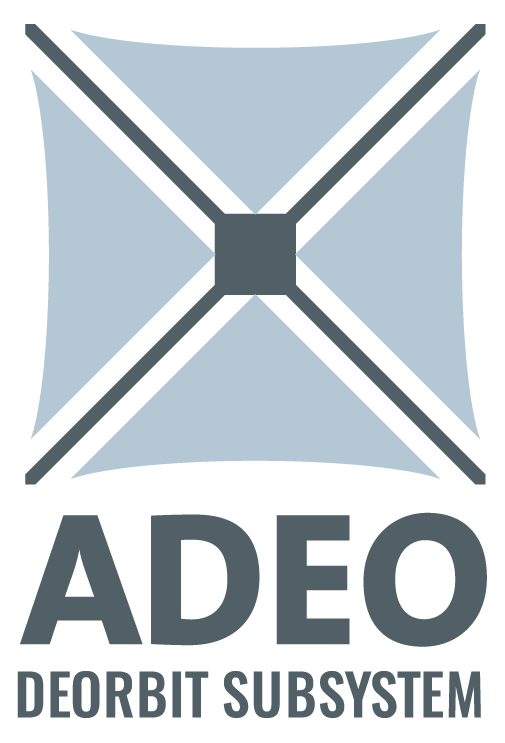
September 2024
HPS with prominent presentation of its whole corporate group at Industry Space Days
Major industry events cast their shadows ahead: The ESA Industry Space Days 2024 will once again take place at the headquarters of the Technology Center of Europe’s space agency ESA in Nordwijk, the Netherlands, from 18 to 19 September 2024. The ISD is organized by the SME Office in the ESA Directorate of Commercialisation, Industry and Competitiveness to foster cooperation between different actors in the entire space sector.
Key elements of the event include:
➔ pre-scheduled 1-on-1 meetings to establish new contacts in an efficient and time-saving manner
➔ an exhibition with ESA and industry booths and the possibility to engage with future partners
➔ keynotes and panel discussions with contributions by ESA, industry, investors and institutional partners
➔ ESA presentations and workshops about business opportunities and future activities.
Once again this year, the European HPS Group will be among the most prominent participants in the event from the space sector of the medium-sized innovation industry. At stand number B25, the Bucharest based specialists from HPS Romania and HPTex GmbH from Münchberg near Bayreuth will be represented under the umbrella of the Munich headquartered HPS – High Performance Space Structure Systems GmbH.
The range of products presented is just as much a testament to the importance that HPS attaches to this industry event as the high-ranking line-up: CEO Dr. Ernst K. Pfeiffer will represent the entire group of companies, Managing Director Astrid Draguleanu will represent HPS Romania and Stefan Bedrich, Head of the Antennas and Structures Department at HPS Munich, will be responsible for large parts of the product portfolio.
At this year’s ISD event, the group of companies will place a particular emphasis on small antennas designed for small missions, alongside HPS’s expertise in deployable antennas.
HPS will also showcase the products of its subsidiary HPTex GmbH, which specializes in weaving reflective mesh suitable for deployable antennas of various sizes and can manufacture stainless steel mesh for the training needs of clients globally.
Meanwhile, at its Bucharest location the HPS Romania primarily produces metal antennas (including 3D printed), secondary structures, thermal hardware (MLI, thermal straps, radiators), MGSE and purge equipment.
All products are designed to be scalable, catering to both large missions and smaller satellites, including cubesat missions.
Nevertheless, the primary focus of HPS at the Industry Space Days 2024 is undeniably on its flagship product, ADEO. This innovative brake sail is generating extraordinary global interest, as it facilitates the automatic and orderly deorbiting of disused satellites of nearly any size, at the end of their missions. ADEO meets all current requirements, essential for obtaining launch authorization on a rocket.
Ernst K. Pfeiffer, who will also be taking part in discussions and meetings in Nordwijk in his other role as spokesperson for the German Space SMEs Association, is looking forward to the wealth of opportunities to focus on personal contact during the two days of the event. He will further expand his own network of customers, suppliers, partners and representatives such as employees from ESA and other institutions and he will promote the strength and power of SME in general and their contribution to the currently happening ESA Transformation.
“For us at HPS, the ESA Industry Space Days are always a very special event highlight. We are delighted to be part of it and would like to thank ESA and all those who plan and set up the event for their commitment.”


September 2024
Suggestions for ESA Transformation by CEO HPS – HLF 2024
Contribution by Ernst K. Pfeiffer: 7 Points Plan (CEO HPS GmbH and Speaker AKRK German SME). This paper has been created AFTER the HLF-event, taking the handwritten notes prepared BEFORE the event.
Noordwijk, ESA/ESTEC | 10. September 2024
September 2024
DLR’s national SatKom – a reflection of the steady development of HPS into the high-tech forge of the German space industry
It will take place again on September 3 and 4: The national conference “Satellite Communications Conference in Germany”. This is already the eighth event of its kind and reason enough to speak of a successfully established tradition.
In Bonn, leading representatives from industry, research and public clients will discuss satellite communications as an incubator for the information society of tomorrow.
From its premiere in 2008 until today, Munich-based space technology company HPS has remained loyal to the event as an exhibitor and panelist. What began with a modest presentation on “mechanical components for telecommunication” has developed into a central technology showcase for the German medium-sized company, which is now a “gold sponsor” of the event. Among other things, HPS now produces entire antenna subsystems for the most demanding missions and applications. Iconic highlights of German space-tech such as Heinrich Hertz and EUCLID provide impressive proof of the excellence of customized reflector antennas and high-end reflectors on a daily basis.
With HERA, whose complete antenna comes from HPS, will be another contender for the history books of space in October. Reliability and technical excellence – these are the characteristics on which the company builds. This claim is also reflected in the main exhibits on the 12 square meters of the HPS stand in the breadth of a whole range of original hardware:
- The KEAN backpack/manpack antenna for civil and military purposes
- The EQM model of the H2Sat reflector
- Brackets made entirely from 3D printing for star sensors, antenna feeds and also for modules of the world’s leading braking sail ADEO for the legally compliant rapid disposal of decommissioned satellites in accordance with the latest international rules for their launch approval
- Reflective mesh for deployable antennas
- The 30-centimeter X-band antenna, also printed in 3D.
While the 12 square meters of the exhibition stand are thus reaching their limits, the presentation of HPS’s capacities for the concrete development of further future technologies is only just beginning here; the focus is on
- Small antennas from 3D printing
- Large deployable reflector subsystems for telecommunications – both for civilian and military users, especially the German Armed Forces – technically comparable to the CIMR antenna for the European Union, developed and built under HPS consortium management
- Dual-band antennas, e.g. for the X and KA bands for downlink
- Multifrequency receiving antennas
- Metal Mesh for the global market, developed under the ESA’s ARTES program, also suitable for higher frequencies and already in use by highly renowned reference customers in North America and Asia.
At the booth, HPS CEO Ernst K. Pfeiffer, HPS department head Stefan Bedrich and project engineer Christopher Tapp will be available to contacts from large companies, the German Armed Forces and commercial customers from the NewSpace sector with functional demonstrations of the KEAN manpack antenna and of the ADEO brake sail for accelerated deorbit of decommissioned satellites, which deploys automatically at the end of the mission. In addition, Stefan Bedrich will report on the “Heinrich Hertz North Beam Antenna” and “End-to-end tests with the KEAN deployable backpack antenna” in the lecture program.

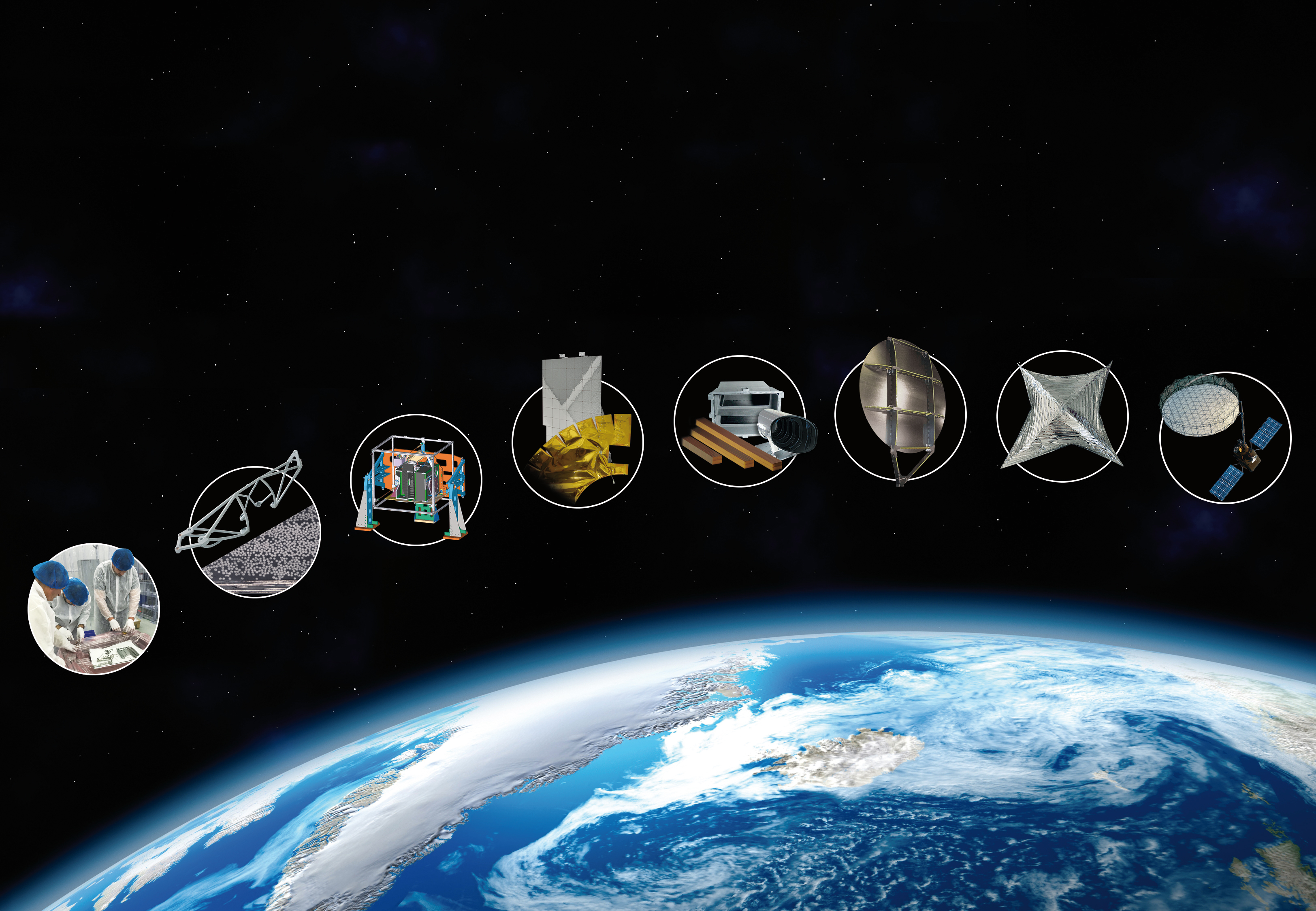
August 2024
HPS CEO: “Wishing my namesake a happy return home”
As a rule, the purpose of a satellite, be it scientific or commercial, is the focus of interest. However, there are also a few exceptions that confirm this rule. One of these is the recently launched flight of an inconspicuous 18-kilo box with a Falcon 9 from SpaceX to a low target orbit at an altitude of 510 kilometers. The name: ERNST – abbreviation for “Experimental Space Application of Nano-Satellite Technology”. Its mission: to use infrared detectors from space to detect where in the world civilian or military rockets are being launched as they fly over the earth based on the hot radiation of combustion gases – and which target they are probably aiming for. This type of technology has long been standard in the USA in the technical instruments for the nation’s fourth branch of the armed forces after the army, air force and navy, the “Space Forces”; in Europe, research in this area is still in its infancy by comparison, which is why the ERNST mission represents an important milestone for Germany.
This application-related research purpose of ERNST is still at a highly experimental early stage, but the renowned Fraunhofer Institute in Freiburg is relying on tried and tested principles to avoid space debris: a braking system with a deployable sail for accelerated return at the end of the approximately three-year mission is also on board. This is a version customized by the Fraunhofer Institute for theERNST mini-satellite. HPS collaborated with Fraunhofer on the sail almost ten years ago as part of a master’s thesis and provided support. HPS is now a pioneer of the technology and currently the world’s only commercial supplier of flight-tested automatic brake sails of the so-called ADEO family, with a total of 5 different product versions for all size classes of LEO satellites. ADEO braking sails are currently becoming standard equipment, because from fall 2024 at the latest, no satellite will be transported into space by the de facto monopoly provider SpaceX without such on-board technology for accelerated return under the new FCC regulations after the end of the mission.
“After a certain period of familiarization with the new legal situation, the run on ADEO brake sails is now in full swing. Customers in North America have also built up a great deal of trust in ADEO and HPS; the fact that HPS with ADEO occupies the lone top position in the NASA technology report on deorbit technologies is certainly helpful here. In this respect, we are naturally extremely pleased that, in addition to our commercial system on the market, we are now also securing further points for product trust and popularity through our collaboration with one of the world’s most famous German research institutes. That’s why, for once, I don’t see the operational research mission as the highlight here, but rather its end, and I wish my namesake a happy journey home,” comments Ernst K. Pfeiffer, CEO of HPS.
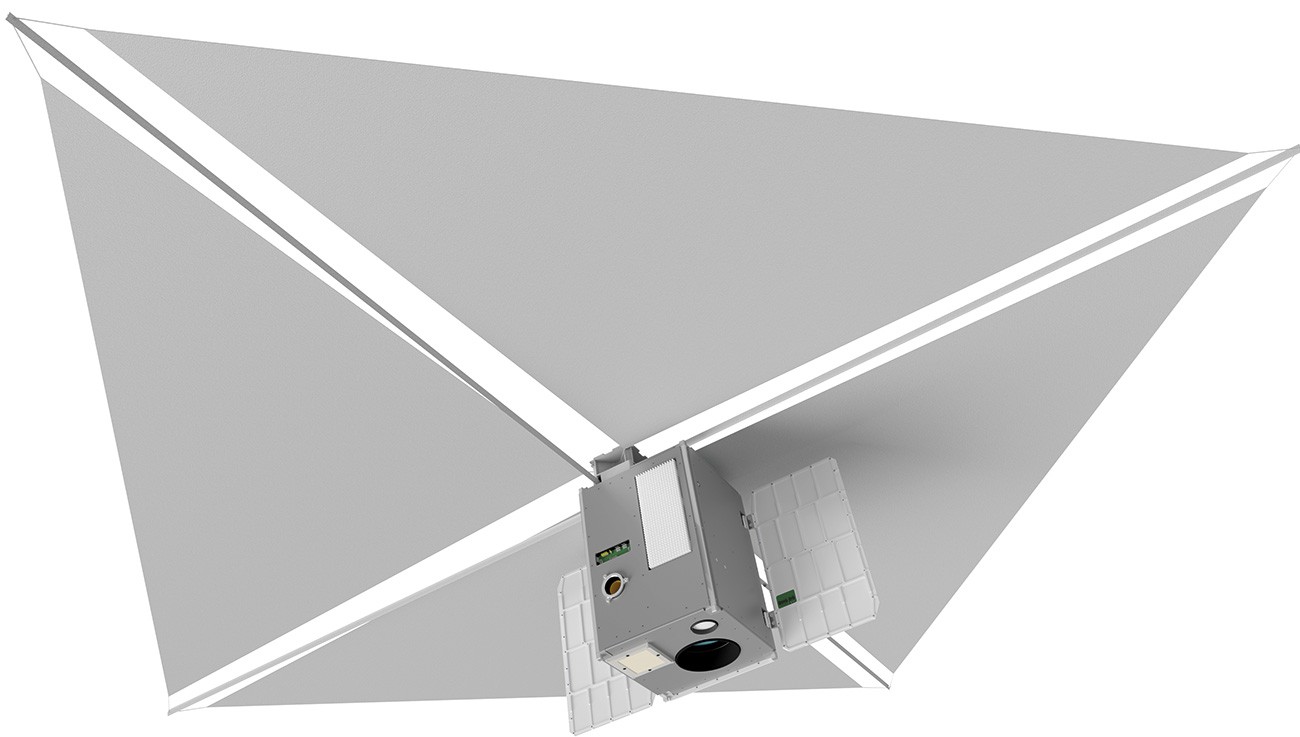
© Fraunhofer EMI

© Fraunhofer EMI
August 2024
On the way to the moon: HPS secures participation in the humanity project I-Hab with a German SME consortium
It is one of the most ambitious international space programs of our time: Artemis, the return to the moon to stay on this most distant outpost of mankind. At the ESA Ministerial Council Conference 2022, Germany subscribed to the European work package under the name GATEWAY with a contribution of twentyfive million euros and the expectation that SME consortia in particular would be given the opportunity to demonstrate their skills.
The Munich-based space technology company HPS, which had already qualified for the contract to provide the Antenna Reflector Assembly (ARA) as a core element of the ESPRIT LUNAR-LINK, now presented its SME consortium. On August 8, 2024, HPS Germany with its SME consortium of proven cooperation partners signed the multimillion Phase C/D contract with the mission prime TAS-Italy and took on the task of developing and manufacturing the so-called “Internal Secondary Structures”, i.e. lightweight panels, hinges and brackets, following Phase B2, which began in 2021 – in a nutshell: to provide the central elements that hold the interior of the habitable I-Hab together while it orbits the Earth’s satellite as a “bus stop moon” and represents the supply hub for all activities around and on the moon.
With great emphasis and intensive commitment, prime contractor TAS has created in the past weeks the conditions for HPS to be able to schedule the kick-off for all project-consortium under its leadership for August 13, based on the written contract in the middle of the summer; this applies in particular to Astrofeinwerktechnik (Berlin), HPS-Romania (Bucharest), INVENT GmbH, Braunschweig, Space Structures GmbH (Berlin), SpaceTech GmbH (Immenstaad). The security of having the right partner in HPS and its consortium for Europe’s part in this extremely demanding humanity project can also be drawn by the Group Prime from the success of an HPS consortium in other highly complex tasks such as the deployable giant antenna for TAS Rome as part of Copernicus CIMR.
In addition to a series of small and large technology projects, in which the company involves other SMEs whenever possible, HPS has now also assumed the role of central “SME enabler” in the supreme discipline of space technology for astronautical survival infrastructure and supply.
HPS CEO Ernst K. Pfeiffer reacted to this renewed vote of confidence with great enthusiasm: “I can say for HPS and all our subcontractors involved without exaggeration: this is a milestone for German SME-industry in the history of international space travel and for all of us more than just a piece of technology. We are creating something here that will go down in the history books of nations; in addition to all the challenges for the engineer, participation is an honor that we are all determined to earn. In keeping with the image of the Olympic Games having took place: this job is the gold medal with value for eternity. Countless videos and live broadcasts of astronautical activities using our technical facilities over many years will keep the memory of this achievement alive for generations.”
Delivery of the qualification models is scheduled for mid-2025, with the flight-assemblies to be delivered to TAS a year later. The launch is scheduled for 2028. Prior to this, there will be intensive discussions in the autumn on all ongoing processes and the “Delta Work” action area, which have been postponed for the time being in favor of the earliest possible start of the work.
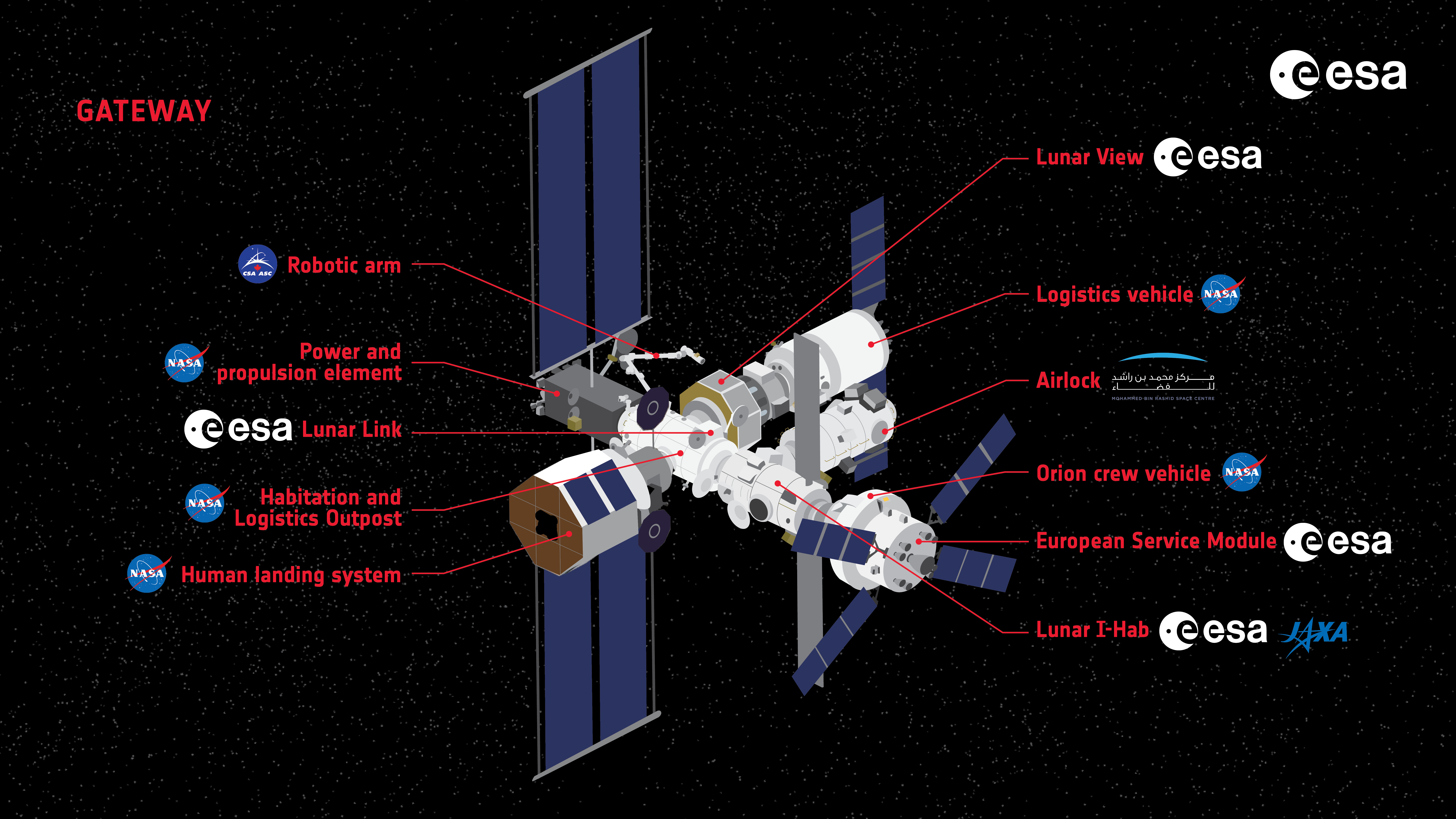
August 2024
ESA: 1 million for product innovation by HPS, AAC and DLR
ESA’s GSTP program is one of the European Space Agency’s most important instruments for promoting new technologies, particularly those generated by SMEs. The program also enjoys high priority in the overall ESA portfolio at the German space agency; the corresponding financial resources now also enable the launch of a new sub-program called “Product Initiative”. With the signing of the contract on August 7, 2024, ESA and HPS as the main contractor gave the go-ahead for the first technology project in this category.
It took just over six months from the idea to the signing of the contract; the funding amount is one million euros. The Munich-based space technology company HPS and its long-standing partner, Vienna-based Aerospace & Advanced Composites GmbH, are contributing 20 percent of their own funds, while the DLR Institute of Space Systems in Bremen is also on board on the research side. Over the next 24 months, highly innovative films (working name “ProFilm”) will be developed in various thicknesses and surface configurations and for large-area applications, which are characterized by two special features in particular:
- they are resistant to the chemically aggressive residual oxygen molecules (ATOX-resistant) and are therefore perfectly suited for use in particular in the highly frequented low earth orbit LEO area,
- Special derivatives are invisible or non-reflective.
In addition to use as thermal insulation for satellites, this also results in innovative applications as invisible brake sails as a further development of the HPS ADEO product range for deorbiting decommissioned satellites.
In this way, they serve four strategic goals of European space:
- Securing technological independence from other major spacefaring nations that have already made progress in this area
- Support European manufacturers of spacecraft and satellites, for whom maximum physical protection is an element of the competitiveness of their products
- Avoidance of astronomy-hostile light pollution in space through non-reflective surfaces on dragsails and thermal insulation such as MLIs and SLIs. There are also plans to use them for solar panels and radiators.
The ideas go as far as deployable structures that could make entire satellites invisible with ProFilm.
HPS CEO Ernst K. Pfeiffer is enthusiastic about the start of the project: “The innovation processes that have now been initiated will result in highly exciting products – the cooperation with our partners, DLR in the north and AAC GmbH in the south, alone is a guarantee of this. Above all, however, this premiere of ESA’s new GSTP sub-programme shows how quickly and effectively the European space agency can identify, accept and master technical challenges. This is exactly what European space travel needs, and this is exactly what innovation drivers from the ranks of SMEs need in particular.”
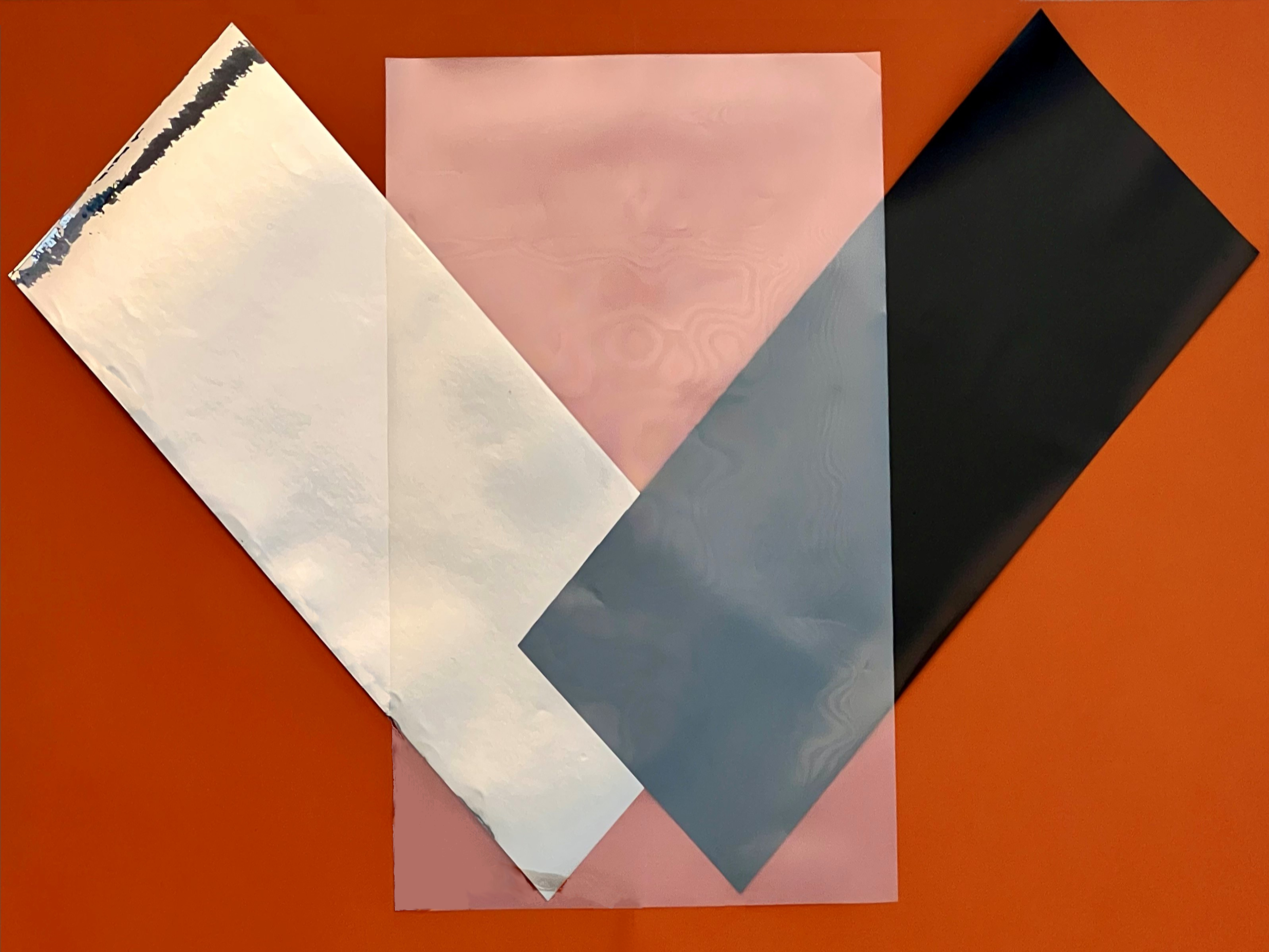
July 2024
HPS CEO as speaker from Europe at the International Day of the Moon in China
On Saturday, July 20, 2024, the fourth International Moon Day, proclaimed for July 20 of each year by the United Nations General Assembly with Resolution 76/76 on “international cooperation in the peaceful uses of outer space”, took place. The physical venue this time was China. Participants came from the United Nations / UNOOSA, the USA, India, Saudi Arabia, Japan and Europe/Germany, among others. Dr. Ernst K. Pfeiffer, CEO of HPS in Munich, had the honour of flying the flag for the latter at this high-level event, which was connected via video link.
He took the floor in Panel 2 on the topic “LUNAR HORIZONS: The Economic Implications of Lunar Exploration and Utilization”, together with Nasr Alsahaaf, Gongling Sun and Satoru Kurosu, moderated by Zhao Chenchen. The video is available here: YouTube. In his triple role as CEO, spokesperson for German SMEs and voice from Europe, Dr. Pfeiffer focused on these key messages: The challenges facing space – and here both SMEs and corporations, European countries such as Germany and Romania – as well as a highly ambitious ESA are as immense as the opportunities.
Radically divergent budget lines of the major continental players reinforce the requirements for models of cooperation, as do the different perspectives that politicians in particular adopt: some see mainly risks, while others see opportunities. Exploiting these opportunities largely depends on the availability of the two main factors: industrial infrastructure and people who can leverage synergies between scientific and commercial exploration. An additional boost to cohesion, despite all cultural and political differences, can come above all from global cooperation on projects such as the exploration and colonization of the moon.
It is equally clear, Pfeiffer told the international plenary session, that more peace between the peoples of the Earth will ultimately lead to more freedom of action and financial budgets in joint planetary exploration. According to Pfeiffer, UNOOSA must play a leading role in this. There are enough topics: space debris, mining rights, space traffic. According to Pfeiffer, the quality and ability to contribute of the many equipment suppliers from Germany will be able to play an important role in solving all problems.
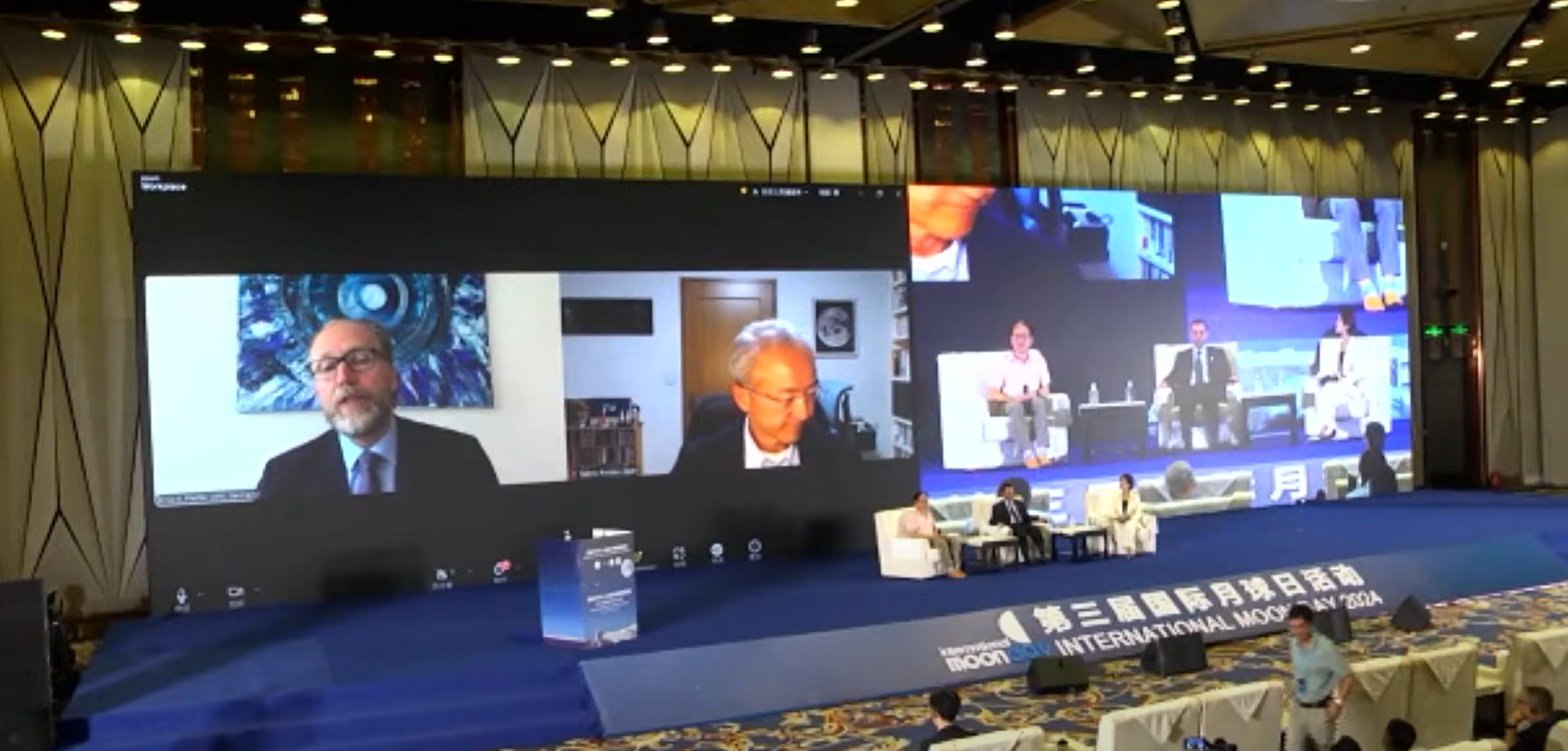
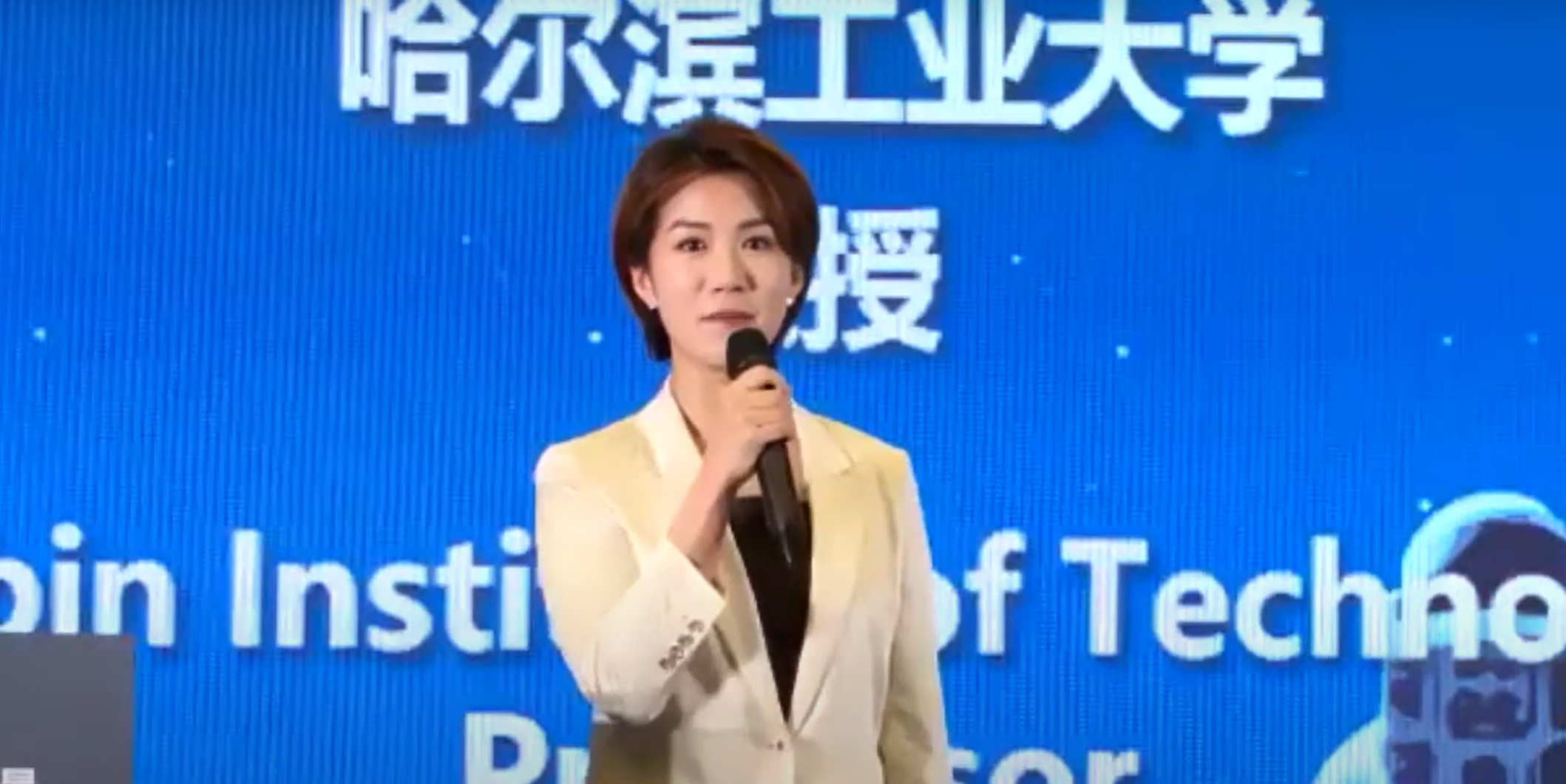
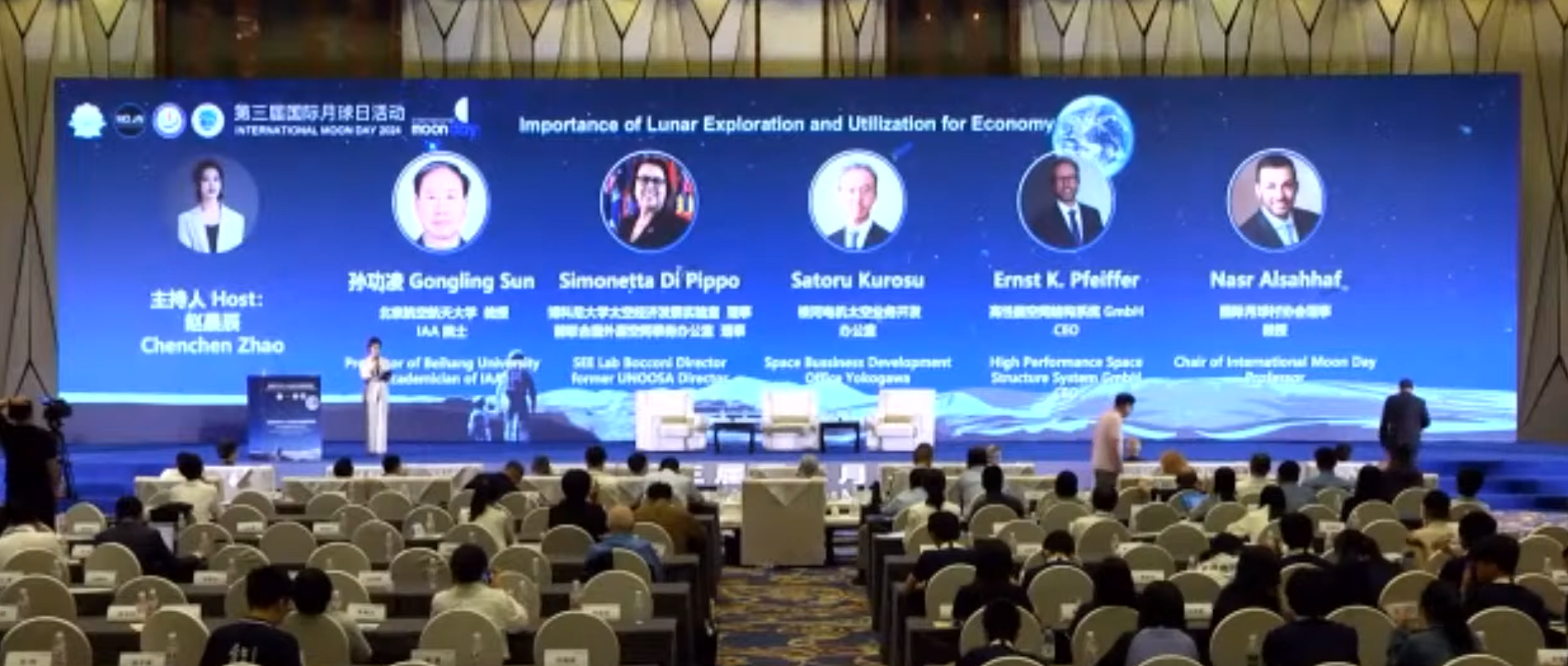
July 2024
Family & Friends Team Event at HPS Munich
HPS celebrates “Family & Friends”: July 10, 2024 is a special date – we celebrated with the entire HPS workforce and their families and all those many friends of our company according to the motto: Shared joy is double the joy.
Because we at HPS have many reasons to be happy: Since July 1, 2024, our HPS family has grown to a new record level with a total of 93 employees (including 11 freelancers and students) at the Bucharest (HPS Romania), Münchberg (HPtex) and Munich (HPS HQ) locations, and in Munich we have just expanded with a new, large floor in Hofmannstrasse as well as a large assembly area in the basement.
The circle of our friends from joint projects and association activities is huge, many from the Munich area came to visit us today, we were overwhelmed by the large number of surprise guests. Success is best celebrated with “Family & Friends”!

ESA pushing market-driven series production with co-financing of 1.2 million euros
July 2024
ADEO deorbit sail system from HPS
Space-related technologies should be clean and sustainable, because only then access to space will remain possible for future generations. This topic, which is currently a top priority of space policy, has led to a number of technical solutions which are now available on the market, with the ADEO deorbit system from HPS leading the way. Being recognized even by NASA, the ADEO dragsails ensure already before launch that satellites will not turn into space debris at the „end-of-business“. Instead, they re-enter the Earth’s atmosphere.
The European Space Agency ESA, as well as its national counterpart DLR and the Bavarian Ministry of Economic Affairs, has consistently supported the twelve years of development of this product by HPS. The sharp increase in demand from customers, particularly in the CubeSat and SmallSat sector from Europe, but also from North America and even Asia, is driven by the simple fact that both ESA, for European launches, and the FCC, for American launches, now demand on-board systems to be able to deorbit a satellite in just 5 years instead of the previous 25 years. Also SpaceX confirms that no more satellites will be launched without complying to this requirement.
With the ADEO variants “Pico”, “Cube”, “Nano”, “Medium” and “Large”, HPS meets the market demand for all sizes of LEO satellites in orbits between 300 and 900 kilometers. All variants are already in production, with manufacturing at the HPS production sites in Munich (Germany) and Bucharest (Romania) which are closely working together. Nevertheless, HPS and the technical ADEO experts at ESA have identified a number of optimization and expansion opportunities in order to urgently increase the pace of the series production and in response to the increasing price pressure of the New Space scene. The company is now raising the required funds for the implementation of these opportunities in the short term, using co-financing of 1.2 million euros signed by ESA on June 28, 2024.
ESA-Director Dietmar Pilz for Technology, Engineering and Quality in a videocon on July 1st: „my best wishes for this important technology development.“
HPS CEO Ernst K. Pfeiffer: “As a company, we are very pleased about the trust and continuous support from the European Space Agency, and therefore indirectly also from the German Ministry of Economic Affairs. However, this is at least as much a reason for joy for all those who, thanks to its technology programs such as GSTP, would like to see Europe in a leading role in the development of components for space technology and -transport, especially in the commercially so important LEO and MEO supplier market.
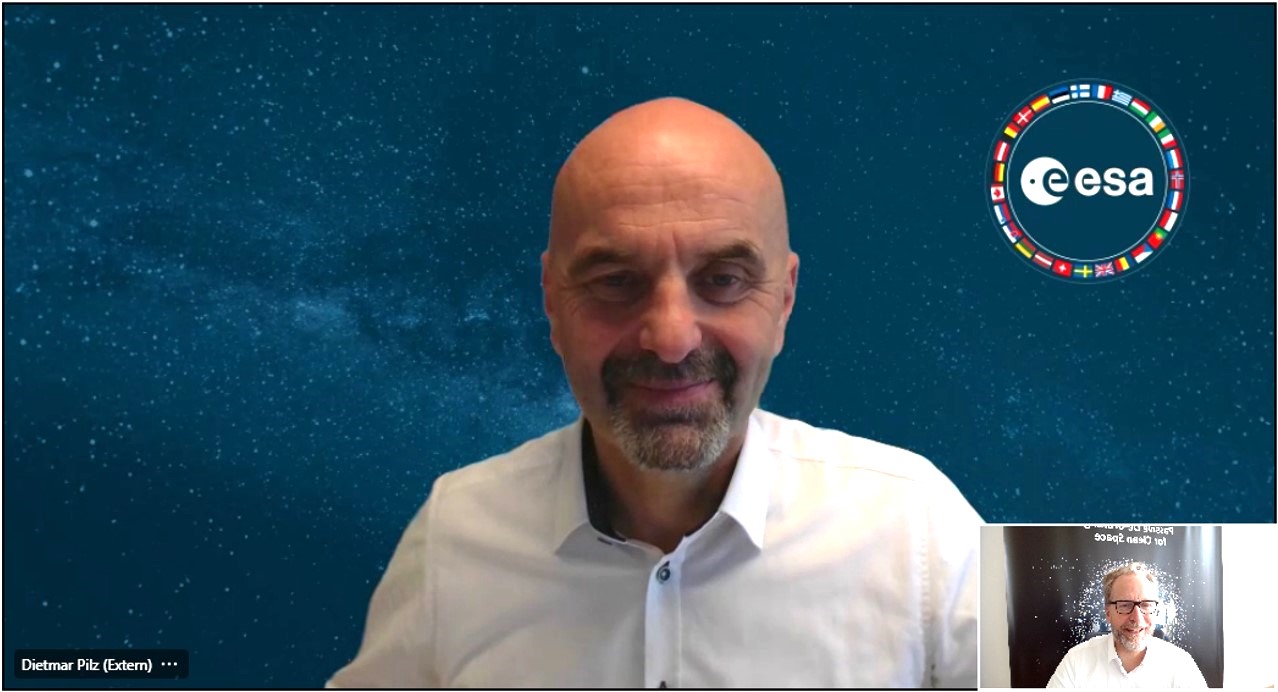
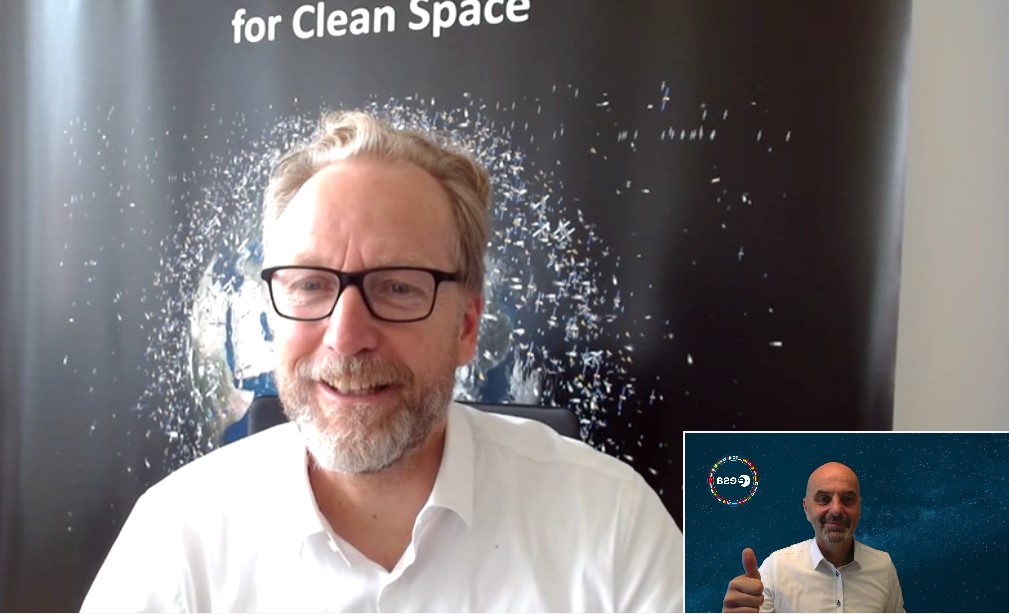
ESA’s priorities here are not only clear, but are also being consistently implemented. One milestone was the recent signing of the Zero Debris Charter in Berlin. The upcoming optimization of series production and the enhancement of our ADEO product portfolio, while maintaining the same level of quality and reliability, will effectively help to face the upcoming peaks in global orders, including those received very late, and thus still enable the launch of these satellites. We shareholders see our own funds, in the 7-digit range over the years, on the one hand as an investment in a strong future for HPS, and on the other hand as our moral obligation to make a contribution to the sustainable use of space.”
HPS Signing of the Zero Debris Charter at ILA on June 6, 2024
June 2024
ESA Leads the Way: Rapid Implementation of the Zero Debris Charter
Sustainability in space travel has also been an issue for the European Space Agency ESA for years. However, only a few months passed between the decision to adopt a Zero Debris Charter and its implementation.
Keynote speaker ESA Director General Josef Aschbacher also saw this as a sign that the time is finally ripe for concrete steps instead of pure symbolism, especially as ESA itself has provided significant impetus for the development of the two main technologies on the way to “Zero Debris”: firstly, ways of removing scrap from space, but above all, equipping satellites with deorbit technology from the outset so that no more waste is produced after the end of the mission.
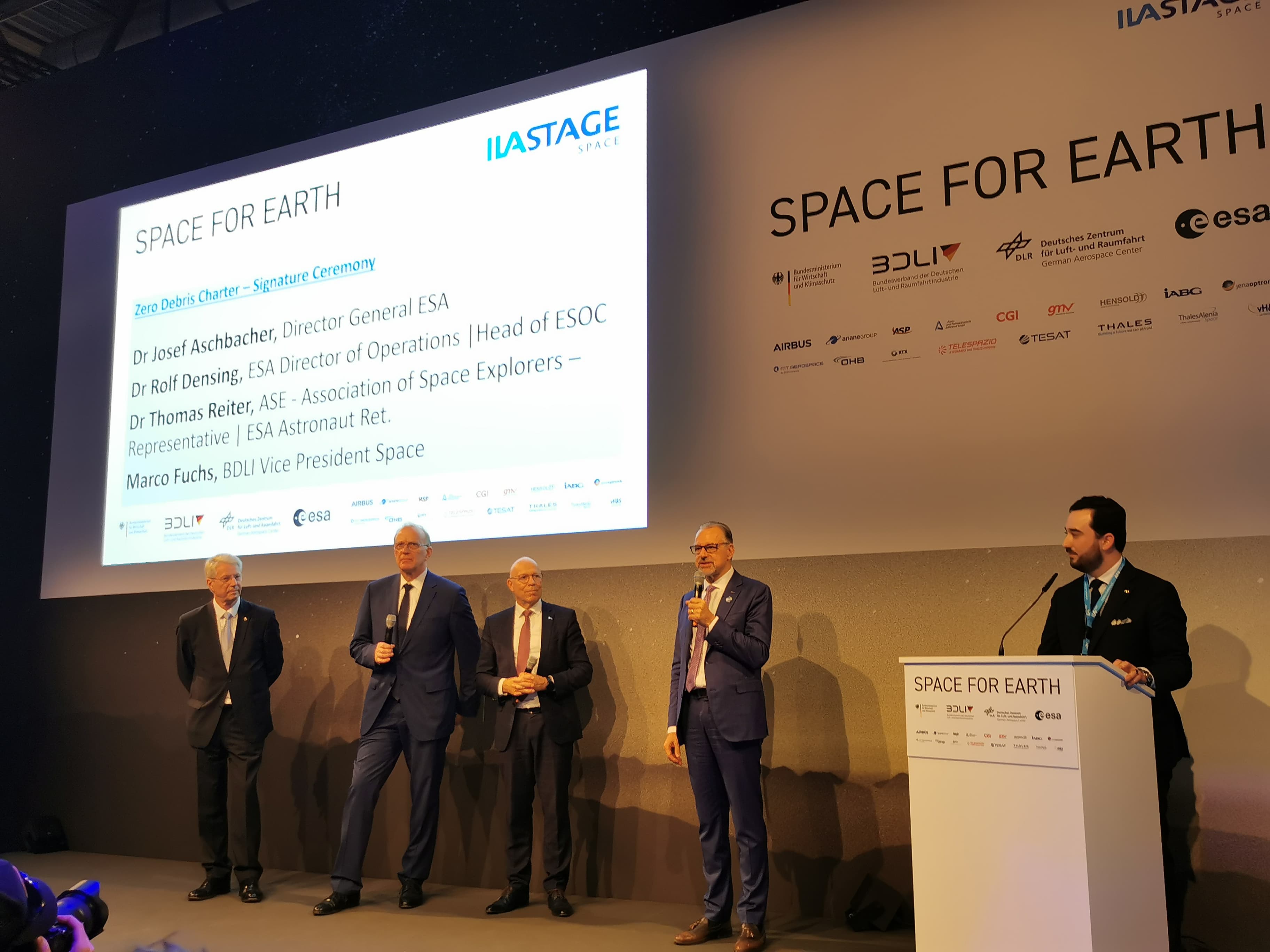
ADEO Drag Sail: The Key to Sustainable Spaceflight
The ADEO brake sail, which is now available as an entire product family for all sizes of LEO satellites from HPS series production, stands for this. In addition to grants and support from ESA, DLR and Bavaria, HPS CEO Ernst K. Pfeiffer also invested a lot of the company’s own money in the project, always firmly convinced that the hour of ADEO would come sooner or later – and if a little later, then all the more powerfully.
It was exactly the same when, in mid-2023, the ESA set the new rule of a deorbit maximum of 5 years for ESA-funded missions instead of the previous 25 years, and, accordingly, LEO satellites without ADEO (or similar) will no longer be launched at all from October 2024, as SpaceX, for example, makes clear in its conditions of carriage in accordance with FCC regulations.

Historic Moment: 12 Nations Sign the Zero Debris Charter
The Charter was signed in Brussels on May 22 by 12 countries, including Germany. Since then, over 100 organizations, companies and entrepreneurs have been waiting for their cue to sign.
The ILA 2024 marks a very important stage on this path towards the sustainability of European space travel and sets an example for companies on other continents.
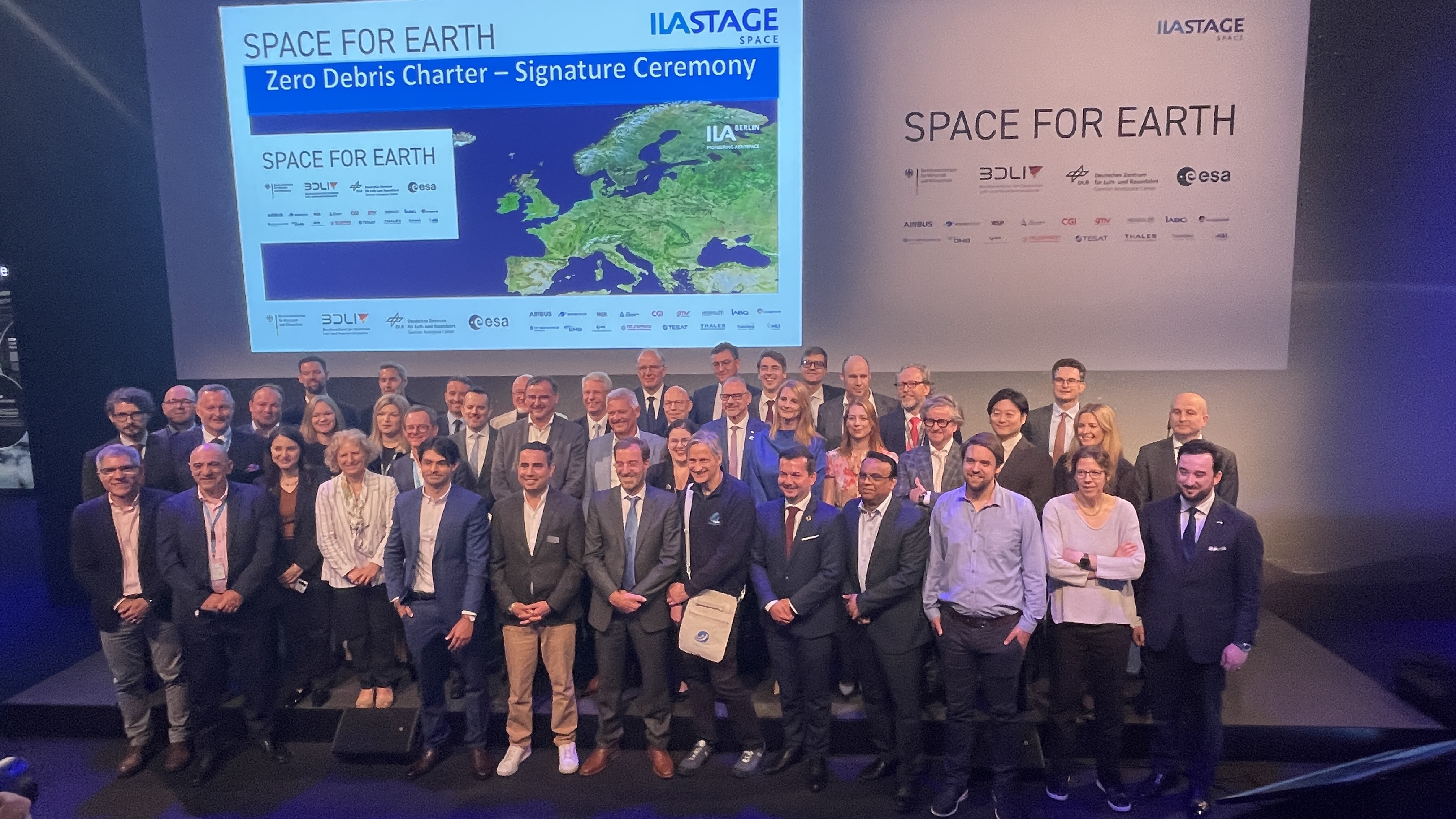
May 2024
Update on ADEO´s Performance
After 487 days of approachflight towards Earth, ADEO-N2 on the ION SCV 3 test satellite continues to sail on a record course without even a scratch: the current position has been reached in a threefold shorter time of the ADEO deorbit compared to the classic missions, whose data are subject to the prediction algorithms.
Expected touchdown at the edge of the Earth’s atmosphere: April 2025.
This is reported by the two mission managers, D-Orbit, Rome (satellite) and HPS, Munich (brake sail).

April 2024
Key Note by HPS-CEO Ernst K. Pfeiffer; ESA-ECSL Zero Debris Future Symposium, ESOC, Darmstadt, 04.04.2024.
ESA Zero Debris Future Symposium, Darmstadt
Opportunities from Implementing a Zero Debris Vision for Europe
Dear Director Densing,
dear Holger, dear Quentin,
dear colleagues from agencies, industry, research and development.
1. INTRODUCTION
It is always difficult to sell it to the general public as an “opportunity” when new regulations come into force. New rules always have something to do with restrictions, with control, with costs on all sides.
Well, let me talk about DIRECT and INDIRECT opportunities in relation to a “Zero Debris Vision”, even if I will sometimes use critical words.
2. DIRECT and INDIRECT Opportunities.
Yes, there are a number of companies for whom the
“Zero Debris Approach” could be a very promising DIRECT opportunity. The list of business areas is not extremely long, but extremely interesting:
First of all, there are a number of different deorbit-technologies.
In recent years, ESA has unfortunately only mentioned to the public the ACTIVE removal of EXISTING large junk. However, it will still take many years before 1,000 items per year can be removed commercially.
But there are already some deorbit-kits for satellites that MITIGATE debris before being created: chemical engines (MBDA, De-Orbit), electric propulsion (Morpheus), tether systems (Sener), or deployable drag sails (e.g. from my company HPS), already with TRL9. The winner-technologies will be those a) that will work, even if the satellite fails, b) that do not shorten the mission time, and c) that are emission-free.
Other business opportunities include debris measurement, debris software models, accurate position determination, collision prediction service, automatic collision avoidance systems, deorbit prediction software, or demise calculation software. All this is creating great opportunities for SMEs, the supplier industry and for service models. In the future there will also be a market for certifiers (a kind of “TÜV” for launch permission), for insurance companies, lawyers and much more.
Now to the INDIRECT opportunities, they are very simple: If we do nothing, there will soon be a collision-domino in LEO, a catastrophe. That’s it. No more space business, we all can close our companies, “Game Over”.
Anyone who hasn’t recognized this can no longer be helped. In this respect, the “Zero Debris Charter” is an extremely important sign to European space players. It will also motivate many countries to introduce appropriate measures.
Surprisingly, but understandably, the newer, small space states that want to do missions by themselves, are at the forefront. A recent article wrote: “Experts at the United Arab Emirates Space Agency are urging global decision-makers to put space debris mitigation at the top of their agenda.”
3. How do direct opportunities become a reality for Europe?
In the short term, opportunities become only reality, if European regulations become binding, when sanctions and fines are threatened. Why should a satellite builder spend extra money on deorbit-technology, if he doesn’t have to?
Catalysts in cars were also only installed, when regulations were set in place.
Of course, regulations must not put European providers at a disadvantage on the global market. And first regulations must be easy to understand and easy for the industry to implement.
Tell a politician: “The casualty risk from re-entering objects should remain lower than 1 in 10,000”…
When I was in February in Vienna at the United Nations Workshop on “Longterm Sustainability of Outer Space Activities”, I promoted on the podium in front of many states the simple “5-years deorbit rule”…; all UN-delegates easily understood it.
Or tell today a motivated satellite start-up: “The probability of space debris generation through collisions and break-ups should remain below 1 in 1.000 per object during the entire orbital lifetime”.
How is he supposed to prove that? And who checks that?
Other non-European countries have also recognized the opportunities. In mid-February there was a “Space Debris Workshop” in Saudi Arabia, where countries from all over the world exchanged ideas about the opportunities.
Opportunities in a global market require massive investment and speed, and some countries will provide it. If we are not attentive here in Europe, the world will overtake us.
Or do we want great European ideas/companies to be bought up by non-European companies?
For doing the very big things, small companies will have little chance.
20 years ago, there were hundreds of online delivery services, now there is basically only Amazon.
20 years ago, there were hundreds of online dating sites…now there’s basically only Tinder left in the world’s connection.
Seriously, when it comes to “sustainable space”, it is primarily the responsibility of states and agencies to introduce it into their missions and, at the same time, to accept respective increased mission costs.
It is a political task not to become dependent on technologies and services, when new regulations are introduced. If you also strive for leadership, appropriate financing and support of the big and small companies are necessary;
we in Europe cannot only rely on venture capital alone, especially when it comes to the issue of zero debris.
(And, on this occasion, leadership doesn’t work with a 30 hours-week or retirement at 60.)
The salvation doesn’t come only with the start-ups either. We in Europe need a healthy mix of established companies and start-ups, depending on the task. We’re still talking about space missions, with technology at the limits of feasibility. You need experienced specialists to achieve success. Global collaborations are helpful for large tasks.
(All the best for you, ASTROSCALE, a cooperation in 3 continents.)
That leads me to the next point, some
4. MEDIUM-TERM TECHNOLOGY PRIORITIES
Three examples from my point of view:
1) If I had real money
(and if I also wanted to see large parts of the world dependent on me),
I would build a GIGANTIC system of debris monitoring, with the largest AI-based database. I would sell this data, with an additional warning system as an option….
It exists already? Yes, I know, but only for larger junk, larger than 10 cm.
In the next 3 to 5 years the small particles, even smaller than 1 cm, will become the greatest unknown danger. They will multiply in a domino system, come in swarms and endanger entire constellations.
I would have a fleet of LEO observation satellites (with their own deorbit kit, of course) operating with different sensors, measuring directly in orbit impacts 24/7 and letting the AI do the rest.
There are already a few ESA-approaches to this in the Space Safety Program, but unfortunately only with underfunded studies; still.
2) Autonomous anti-collision-subsystems for autonomous flying.
A global market for small modules, buyable to everyone.
Will Europe be ahead here? Technologically and price-wise?
3) What is missing is a comprehensive software to predict, whether a satellite will burn completely or not. Because anyone who cannot prove this, especially for satellites >200 kg, must (according to the Zero Debris Charter) perform a controlled (and therefore expensive) re-entry over the seas.
Satellite builders prefer to buy certified software.
However, this software must be affordable, otherwise only large companies can afford it and that cannot be the goal of a Zero Debris initiative.
5. But what should be done NOW, IN THE SHORT TERM?
1) The 25 years deorbit rule dates back to the Middle Age, but is still firmly anchored in most minds. I strongly recommend that the rule:
“Deorbit within 5 years after end-of-business”
will be introduced immediately for all ESA missions into LEO and that this will be communicated publicly from the highest level, e.g. right after signature of the Zero Debris Charter.
2) Neither ARIANE 6 nor VEGA may carry any more satellites into LEO, that do not follow this rule.
Elon Musk is showing the world: from October onwards, there will no longer be permission for environmental sinners to fly on FALCON 9.
3) Each satellite should have retroreflectors on board to enable accurate tracking from the ground.
4) Financial vouchers should be awarded by ESA to companies and universities that install zero debris technologies on their satellites.
5) Director Densing, if European countries are serious about environmental awareness and “Clean Green Space”, the Space Safety program at CMIN 2025 must be significantly increased.
6. FINISH
So, I think that’s enough powder for a lively panel discussion.
For now, thank you very much for your attention.
February 2024
HPS with ADEO in top position in NASA’s technology report
Since its inception, the U.S. space agency NASA has been the primary driver of progress in aerospace technology. NASA’s Scientific and Technical Information (STI) program plays a key role in ensuring that NASA maintains this important role. Its Technical Reports Server contains one of the largest collections of aerospace science STI in the world, including “Technical Publications” on critical research and achievements of lasting value.
Focus on deorbit technologies
The aim of the latest publication, published in February 2024, on groundbreaking technologies, particularly in the field of small satellites, is, among other things, to present the world’s leading deorbit technologies, which can be used to technically implement the new regulation on the disposal of LEO satellites, which has been sharply limited from 25 to 5 years in both the USA and Europe. In its evaluation criteria for technologies, NASA is primarily guided by the TRL standard of the respective products and also pays great attention to the scalability achieved.
ADEO has it all: top values up to TRL-9, scalability and flight successes
According to NASA, the deployable brake sail system ADEO from HPS occupies the leading position on the global market in the category of passive deorbit systems. This is because ADEO not only offers technological maturity up to the peak value of TRL-9, but also a successful flight heritage and is also prepared for equipping various small satellite formats thanks to the HPS series production of an entire product family. This broad protection of HPS’s leading position with ADEO has been widely recognized by NASA – despite the fact that it is a competitor with several projects in this field:
“The Drag Augmentation Deorbiting System (ADEO) is a drag sail developed by the German company High Performance Space Structure Systems (HPS). The sail is scalable and HPS has already launched a number of missions with different configurations up to TRL 9. The ADEO-N series is tailored for small satellite missions of 20-250 kg, while the ADEO-M and ADEO-L series are designed for larger missions of 100-700 kg and 500-1500 kg respectively. The ADEO-N series corresponds to a sail size of 5±2 m2, while ADEO-M covers areas of 15 ± 5 m2. There are also smaller versions, especially for picosatellites (ADEO-P) and CubeSats (ADEO-C), and the possibility to configure the sail size according to customer requirements. Various missions have already tested the ADEO-N product family. The NABEO-1 was launched on a Rocket Lab Electron rocket kick stage in 2018. The sail was deployed just 90 minutes after launch. There was a problem measuring whether the drag sail was initially deployed, but visual ground observations confirmed successful deployment and performance. At the end of December 2022, the ADEO-N2 sail was launched into space by the ION-2 spacecraft carrier of the Italian launch service provider D-Orbit. The successful deployment was recorded by the ION carrier’s on-board camera.”
ADEO – Deorbit technology as a prerequisite for launch authorization
With this presentation in one of the most important technology documentations of the US space agency NASA, HPS with ADEO becomes a highly visible beacon in the worldwide field of passive deorbit systems for all satellites that have to comply with the new 5-year deorbit requirement in order to be approved for launch by American or European launchers
January 2024
KEAN II passes the acid test at the University of the German Armed Forces and in the field
KEAN, the integrated deployable lightweight manpack complete antenna from HPS and its development partners, has taken a decisive step forward in the KEAN II (Second Generation) version: it passed the tough link test at the University of the German Armed Forces in Munich in December 2023 and the handling test in the field. This brings the goal of the joint HPS project much closer: the development of a complete system for bidirectional satellite communication based on preliminary developments already carried out by HPS and these specifications:
- Conformance to satellite operators (e.g. EUTELSAT, INTELSAT)
- Ku-band, 1.2 m diameter, also X- and Ka-band capable
- Including communication system, electronics, battery, tripod, backpack carrying system
- Total weight <20 kg
- Commissioning in under 15 minutes from backpack transport to satellite link
- Innovative, cybernetic folding mechanism based on the opening and closing of flowers
- Design and definition of components and production processes suitable for series production for a rapid transition to series production in large quantities.
Partners in the project are:
- The system supplier MTEX (Wiesbaden) with a focus on ground stations and electronics.
- The start-up Blackwave (Ottobrunn) with the economical series production of complex carbon components.
- The Chair of Carbon Composites (LCC) at the Technical University of Munich for the design of innovative extremely lightweight reflector fins.
- The Bundeswehr University for defining the user requirements and carrying out the antenna link tests with satellites.
The additional antenna deployment tests in rough terrain in the Bavarian Alps were closely monitored from the air by camera-guided drones; they provided complete documentation of the challenges, but also of the success of these tests. Videos are available at the YouTube Channel. Particular attention was paid to features and elements such as these during the tests:
- Wearing comfort off-road (walking and running) with different body sizes
- Assembly and disassembly over time in rough terrain (bushes, gravel, snow)
- Speed of unfolding and folding
- Handling by untrained test persons
- Wind load compatibility
- Handling in cold conditions (requirement: from -30o C to +55 o C)
- Robust construction
The target markets for applications of this completely new technology for communication via satellite, especially on X-, Ku- and Ka-band, cover all three conceivable directions:
- commercial, such as journalistic reporting from rough terrain
- institutional, such as rescue and disaster relief operations
- military, such as for small special forces operating independently of vehicles without a direct connection to the base of fully equipped large units
- scalable up to 3.6 m, also for mobile transportation on small vehicles.
Beyond the technical successes, KEAN II is currently growing wings from a completely different direction: the European Commission’s major IRIS2 project to establish absolutely secure connectivity via a dedicated multi-orbit constellation of several hundred satellites from LEO to GEO is giving a significant boost to all those application scenarios that were previously considered to have only seen very hesitant development due to their dependence on non-European constellations and individual satellites. This applies in particular to the institutional and military markets, both of which are now growing into larger dimensions.
The last stage of development was funded by the German Aerospace Center (DLR) as part of the ILKA project with funds from the Federal Ministry of Economics and Climate on the basis of a decision taken by the German Bundestag.
The magic triangle: competence – quality – capacity
January 2024
Servicing Europe´s ambitions in space from Romania
In less than a blink of an eye, it will be a full decade that Romania´s leading space-SME “High Performance Structures Inovatie si Desvoltare S.R.L.” will look back to the beginnings of the company´s history in 2016, when it opened its office in Bucharest. Founded to meet the needs for additional capacities of HPS Munich, HPS RO quickly developed ttowards becoming one of the most renowned full-service spacetech-companies from ESA-member states in the Eastern Europe.
Just one question to managing director Astrid Draguleanu:
From the very beginnings and through the years, you have been in the position to significantly participate in shaping and guiding the company´s development. From your perspective, which factors are the ones that keep pushing HPS forward on the road of success?
From our point of view, there are three rock solid pillars the company´s success rests on.
Number one: COMPETENCE. HPS RO is an engineering company, with driven top engineers trained in the sectors of engineering, development, assembly, secondary and tertiary structures, thermal and RF-components, mechanical ground support equipments. In addition, we have managed to combine forces with commercial and institutional suppliers and partners, contributing competencies in special segments like precision manufacturing, welding, process verification, and assembly tests. So when one´s looking for a onestop source of competence in Romania and ESA´s Eastern European presence as a whole, they will sure find it in Bucharest.
Number two: QUALITY. In the Space Industry, quality is attributed to those who manage to comply to the specific standards and building up an immaculate heritage of successful steps on the ladder to the top. HPS RO proved that it has taken those steps, and done it with at an amazing pace: In the past eight years we have contributed to a total of twelve Space Missions so far. To get an idea of what´s behind that, let us just take a more detailed look at the contributions we´ve made in the area of mechanical ground handling and support equipment, MGSE:
- Purge Equipment for the JUICE Spacecraft on behalf of Airbus Germany
- Satellite Vertical Integration Stand for the Biomass-Mission, Airbus U.K.
- Instrument & Optical Bench Lfting Frames, Copernicus Chime Mission, OHB
- Instrument Turntable Support Stand and Instrument Turntable, Instrument Alignment Trolley, Instrument Lifting Device, Multipurpose Adapter, Vibration Test Adapter, Vertical Integration Stand, Instrument Support Structure and Instrument Mass Dummy for the METOP mission, Airbus Germany
- Satellite Hoisting Device, transport containers, various adaptors – in total 14 MGSE-assemblies for Copernicus CIMR by HPS Germany.
Number three: CAPACITY. From the very beginning, it has been absolutely clear to all of us that HPS RO has a great future, by focusing on its character as a company with high professional level and not afraid of hard work. That is why building and keeping up capacities is yet another pillar we use. Take, for example, the fact that, before having even one contract to justify the expenditures, we started out from the beginning with production facilities, giving room the even the most ambitious dreams of development. And it proved to be the golden path to go: Apart from servicing all current needs of customers, we were most happy to have the capacities for starting out the series production of the HPS Satellite Dragsail product family “ADEO”, when the winds of change reached politics and deorbit technology became a legal prerequisite to let a satellite go into space to begin with. Of course, we apply this philosophy of “growth follows capacity” also to our HR-management. Today we employ a total of 20 engineers in Bucharest, growing in numbers at top speed. We are convinced that the reason for the whole success story is the delicate balance we have learned to keep in our magical triangle of COMPETENCE, QUALITY, and CAPACITY.”
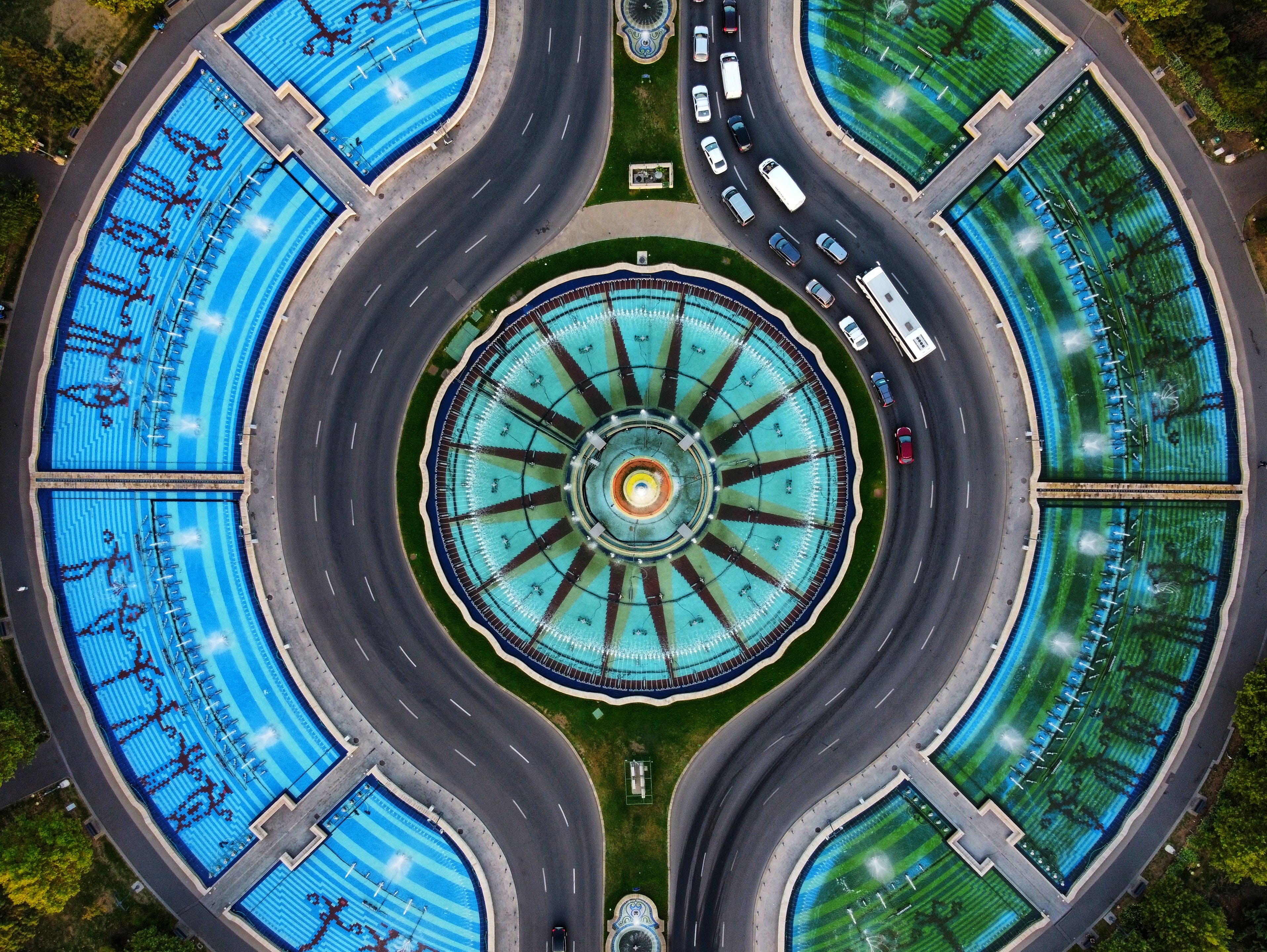
The Munich-based space-tech company HPS had this development in mind more than ten years ago, when no one else was really thinking about ways to avoid space debris. With great support from the space agencies ESA and DLR, the DLR institutes in Bremen and Braunschweig, the companies DSI, Bremen, and formerly HTS, Coswig, plus a seven-digit-investment of HPS, the company´s highly committed young team of experts has created an entire product family under the generic name ADEO, from the smallest versions ADEO-P (Pico), ADEO-C (Cube) and ADEO-N(Nano), ADEO-M (Medium) and the latest member of the group, ADEO-L (Large). The development master plan not only extends even further to possible ADEO variants with up to 100 square meters of braking surface, but also leaves enough room for derivatives with completely different applications, such as the monitoring of space debris smaller than1 cm directly in space.
In its largest flight-ready version to date, L1, ADEO has a take-off weight of 10 kg at dimensions of 43 cm x 43 cm x 25 cm; in contrast to the smaller versions, this unit also requires its own power supply for motor-controlled deployment of the masts and sails. ADEO-L1 generally fits perfectly on satellites up to the 1,500 kilo class.
In the first quarter of next year, ADEO-L1 will be integrated onto a satellite of the Belgian company Redwire for its first test flight at the end of 2024/beginning of 2025 as part of a EU program, while the versions ADEO-N1 and ADEO-N2 have already passed their baptism of fire in space. Approaching the fiery finale is currently ADEO-N2, deployed in December 2022. Since then, it has already lowered its satellite from an orbital altitude of 510 km to 460 kilometers in only 12 months without the aid of any fuel or attitude control. Expected “arrival” in a completely burnt-up state: mid2025 – and thus even around five times faster than without sails and twice as fast as prescribed.
ADEO-L1 will master this path of final in-orbit verification just as safely, company boss Dr.-Ing. Ernst K. Pfeiffer is certain. As with the other versions, it will then go straight into series production for which the company has special production facilities at its Munich and Bucharest sites.


